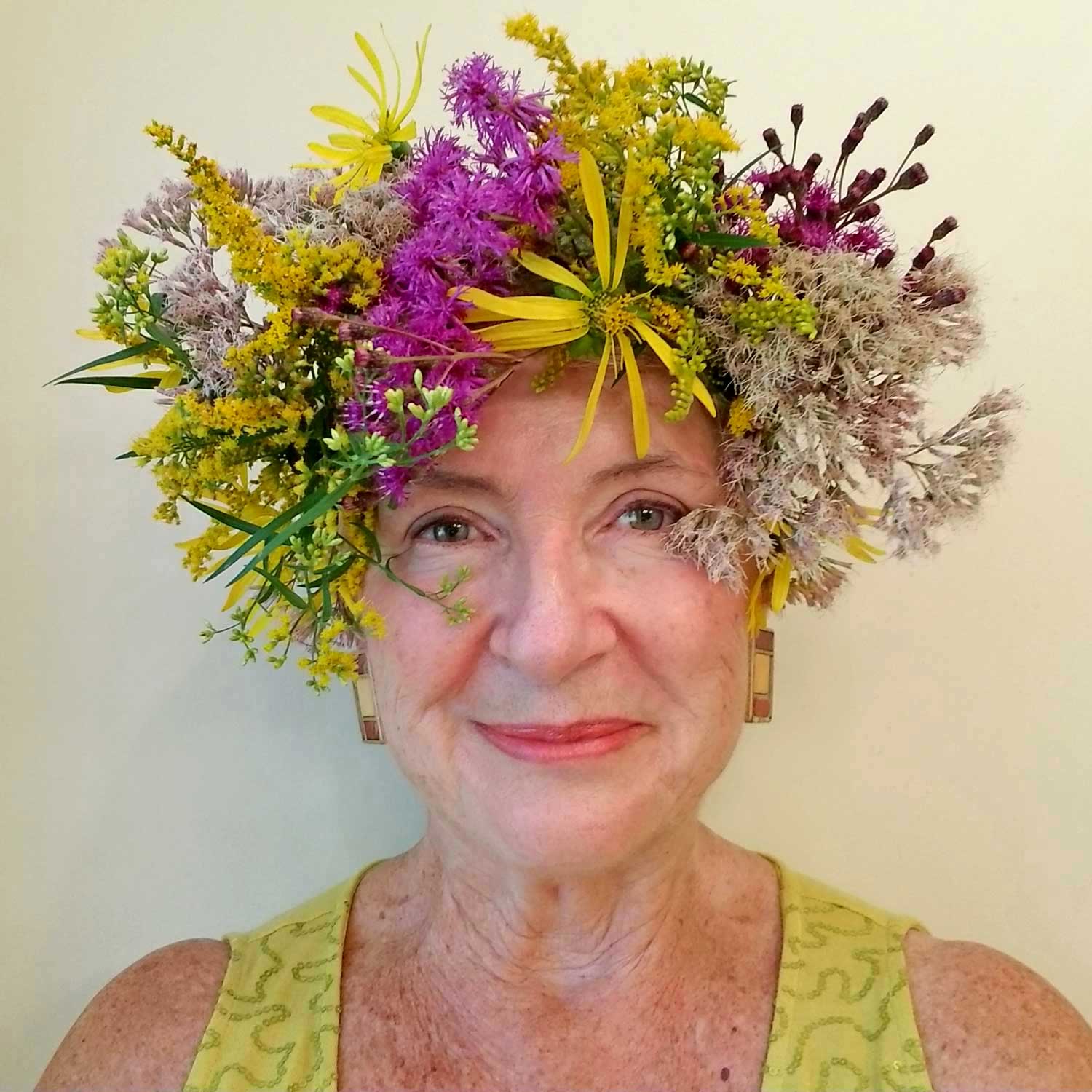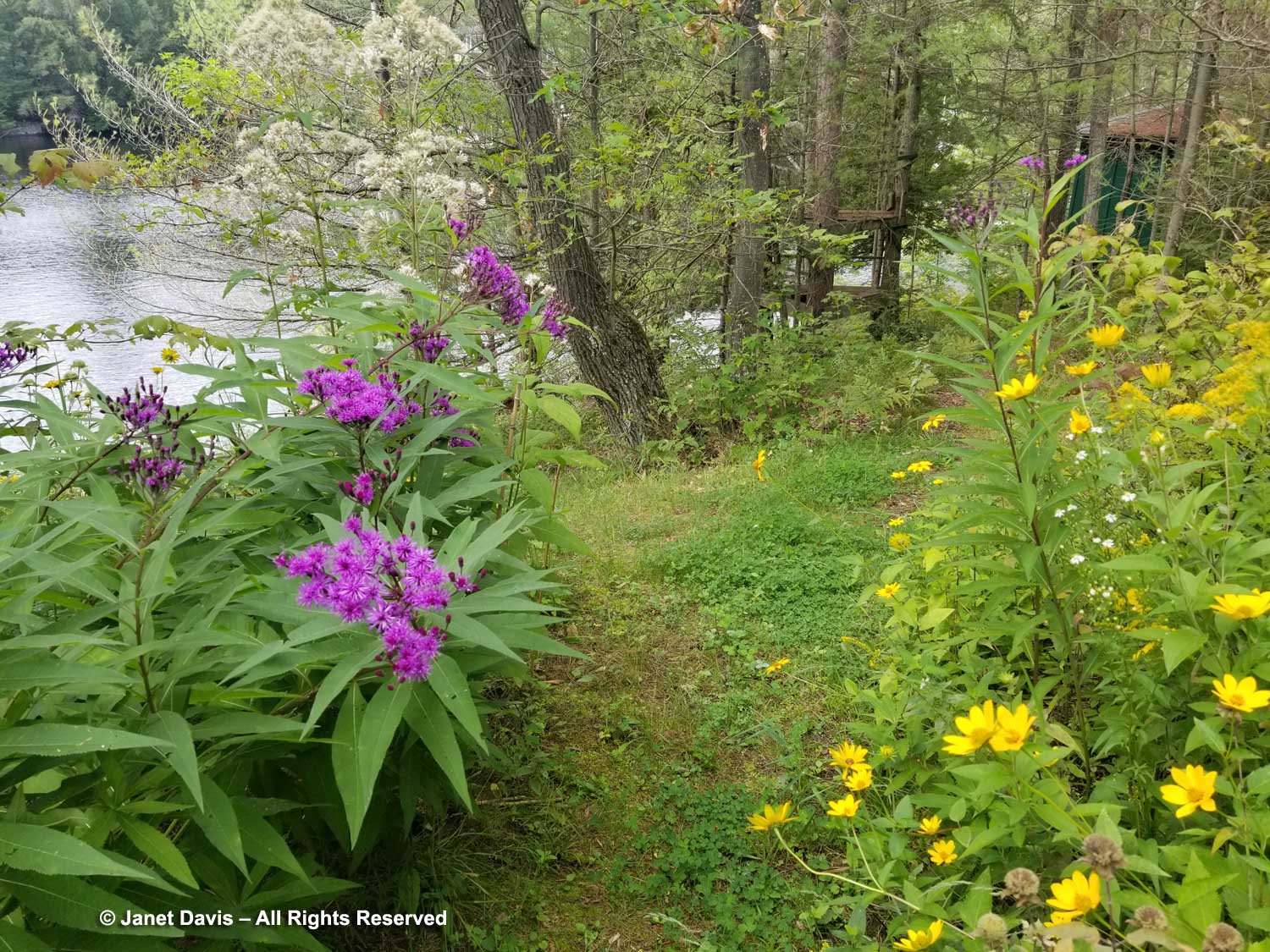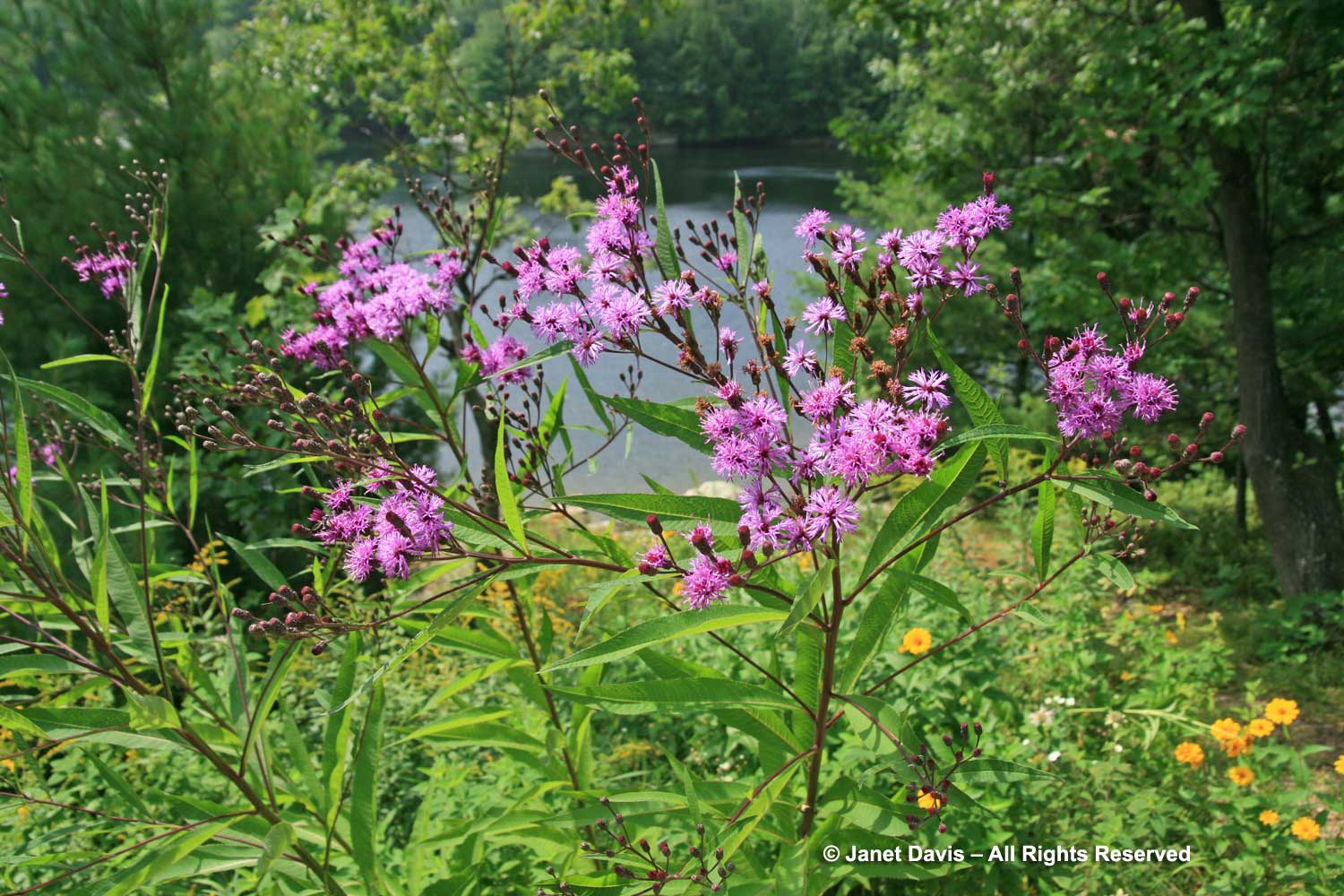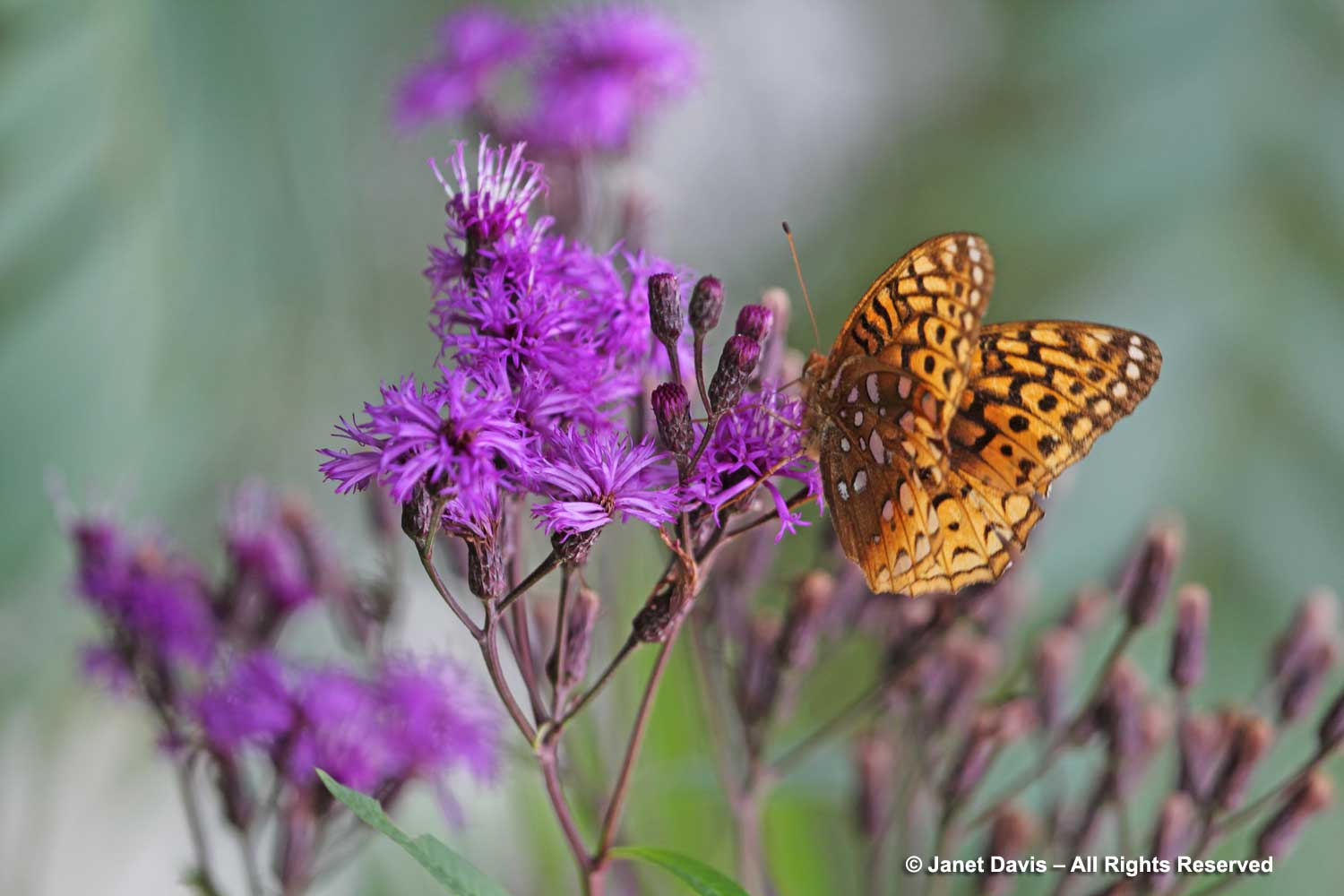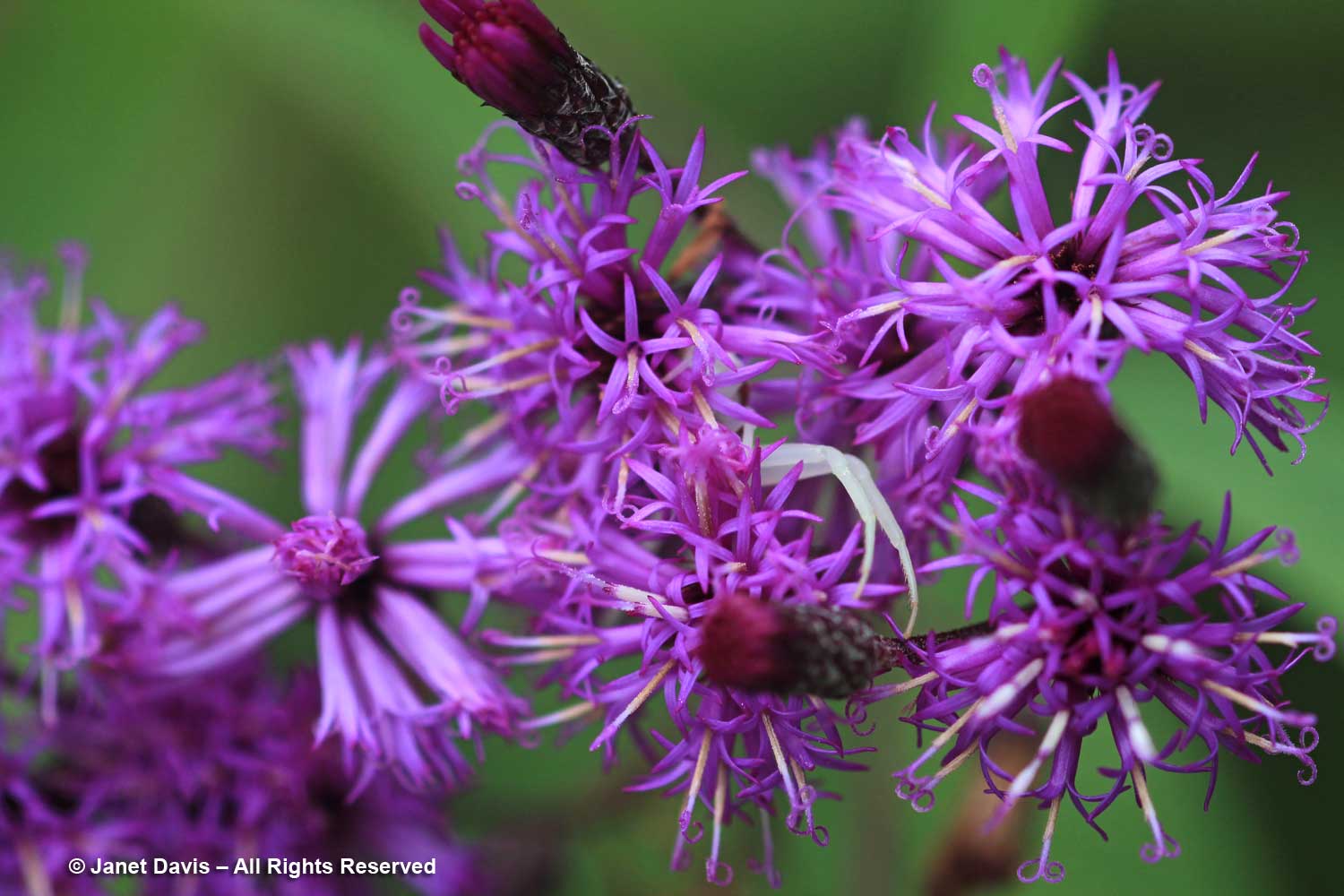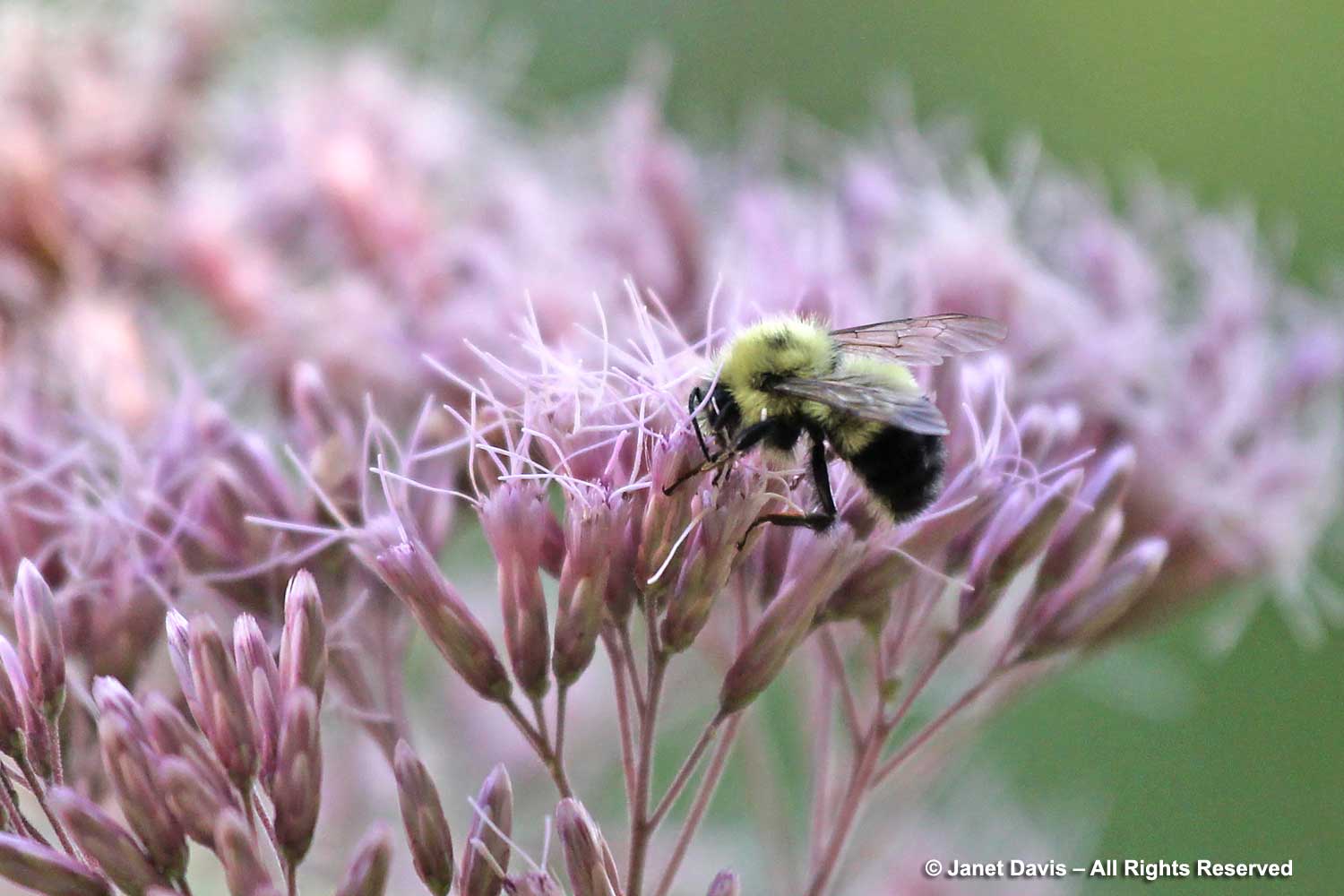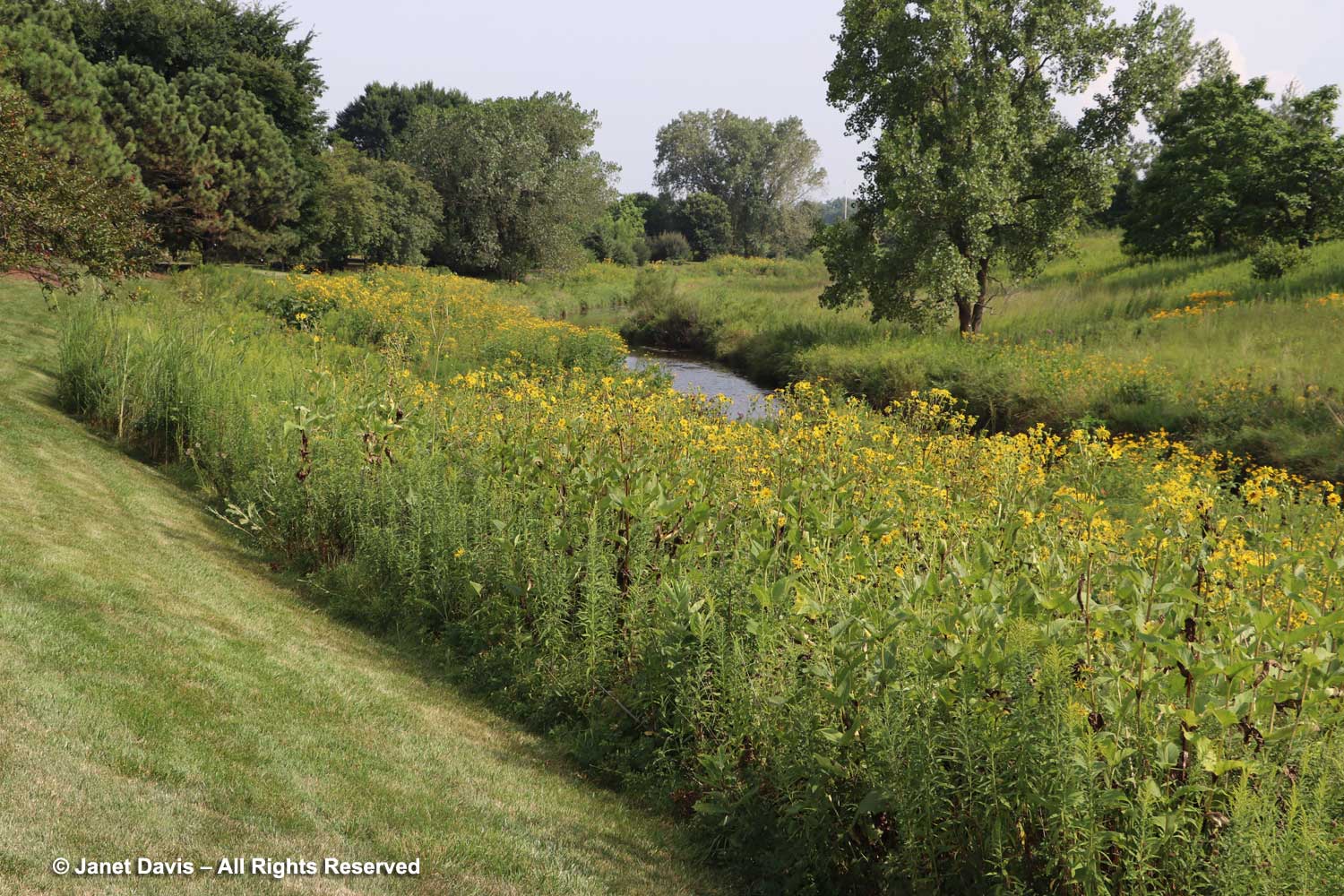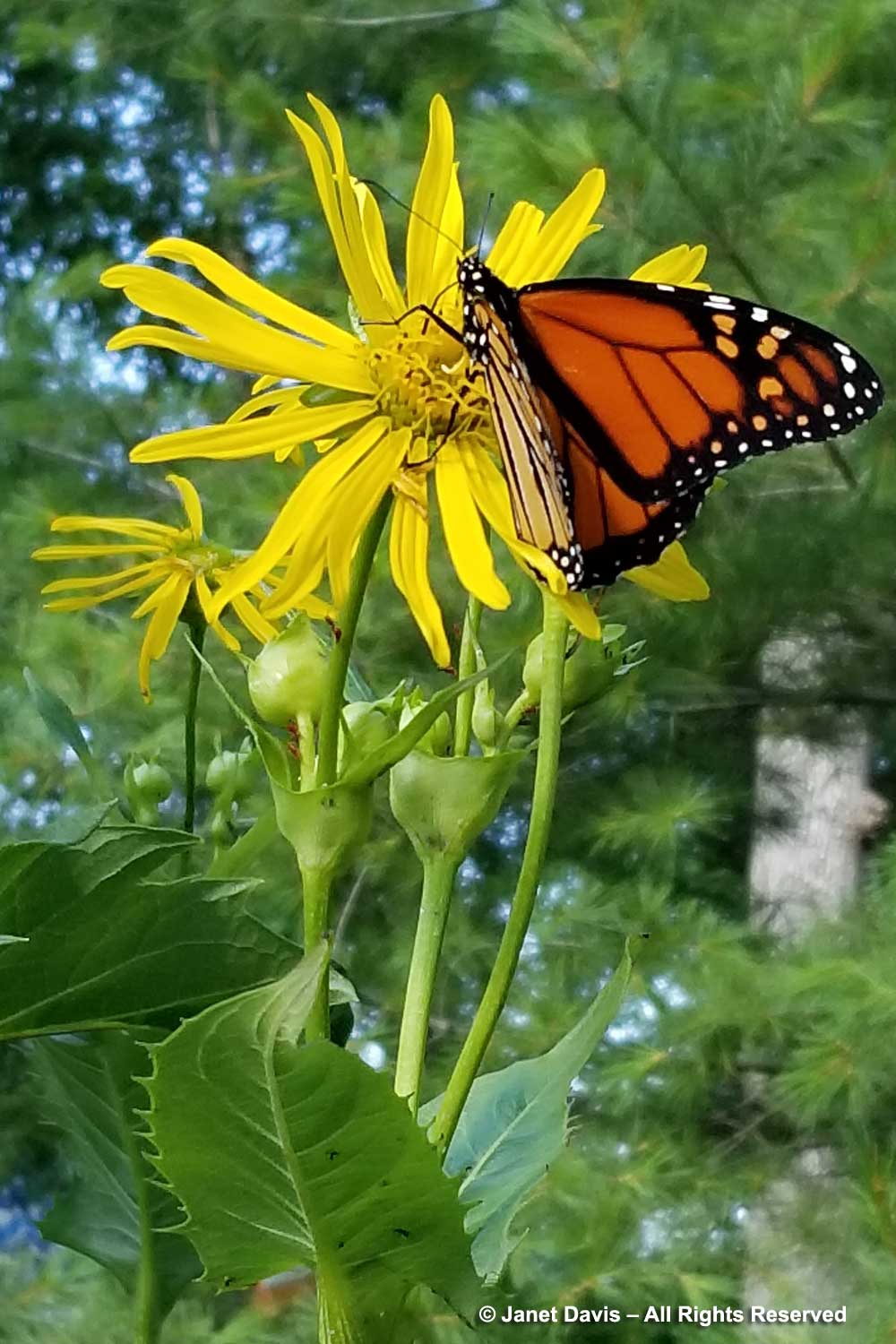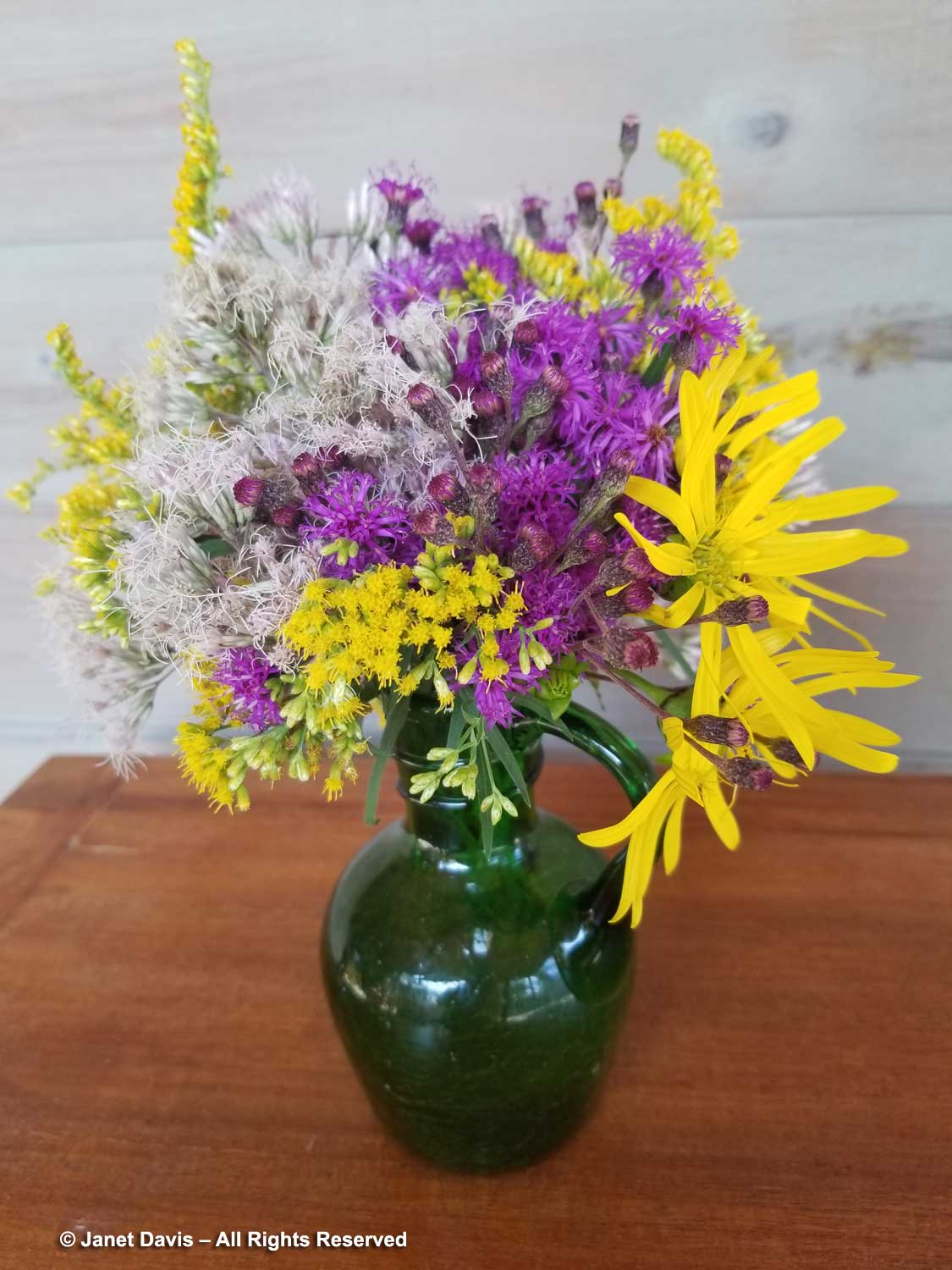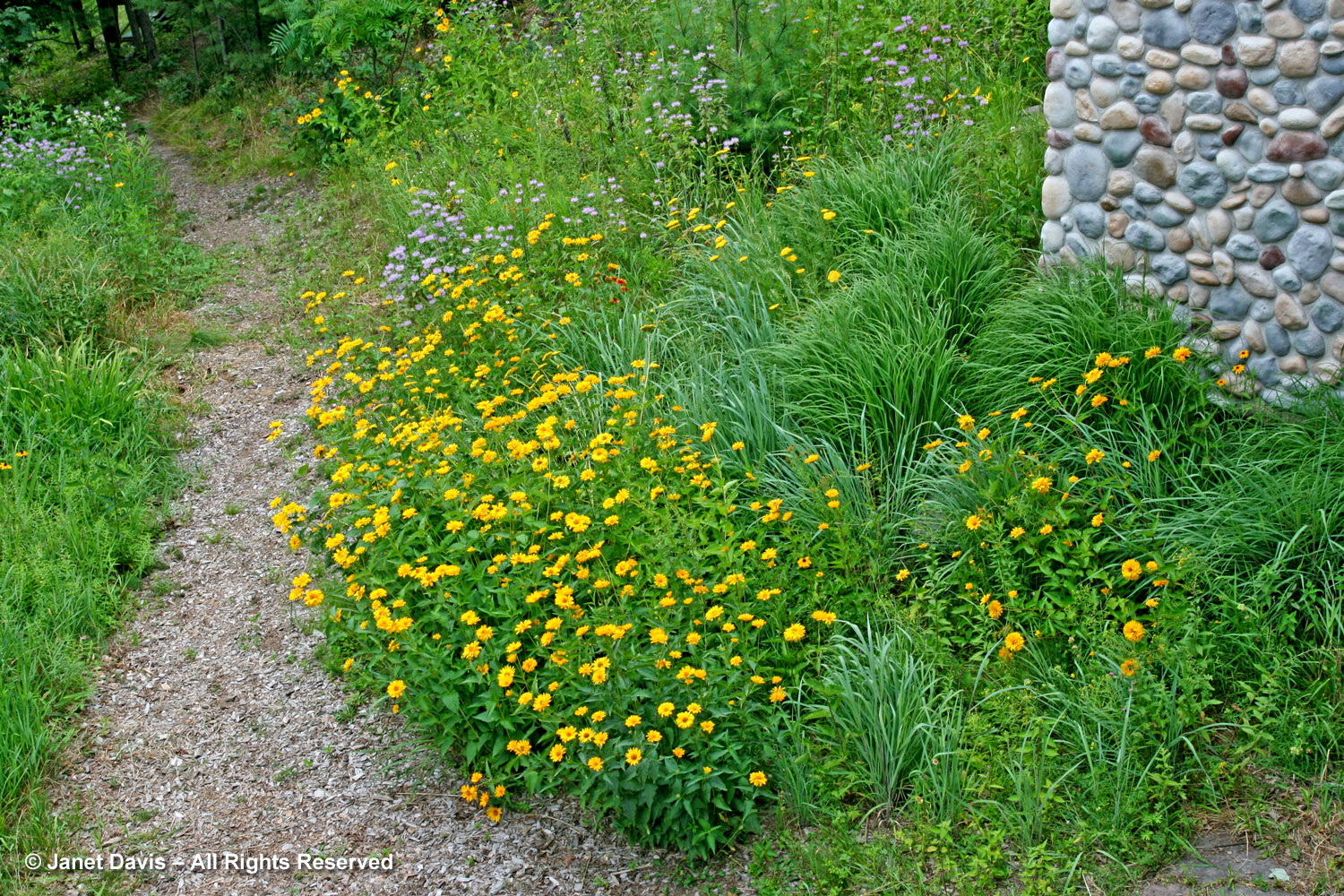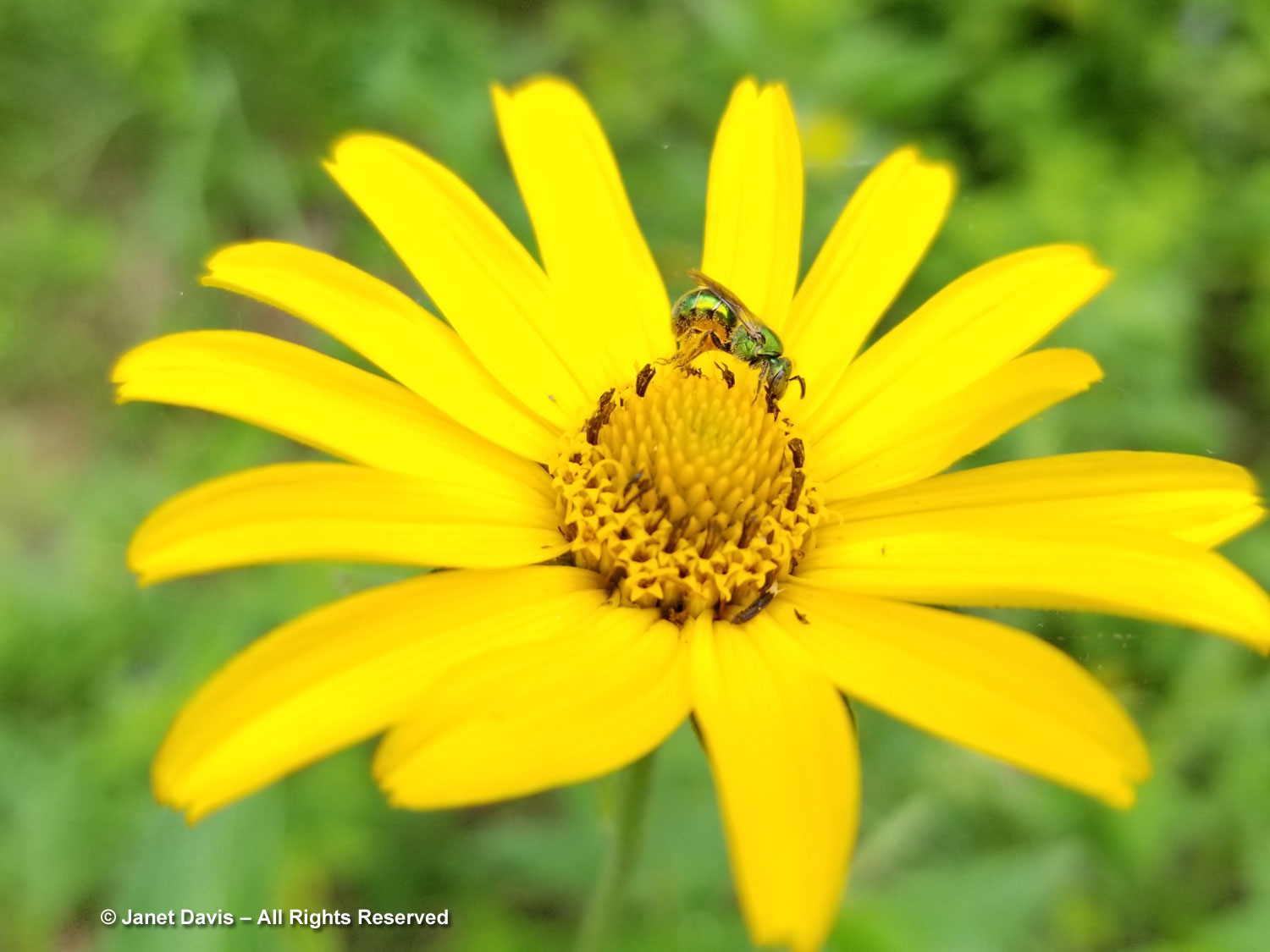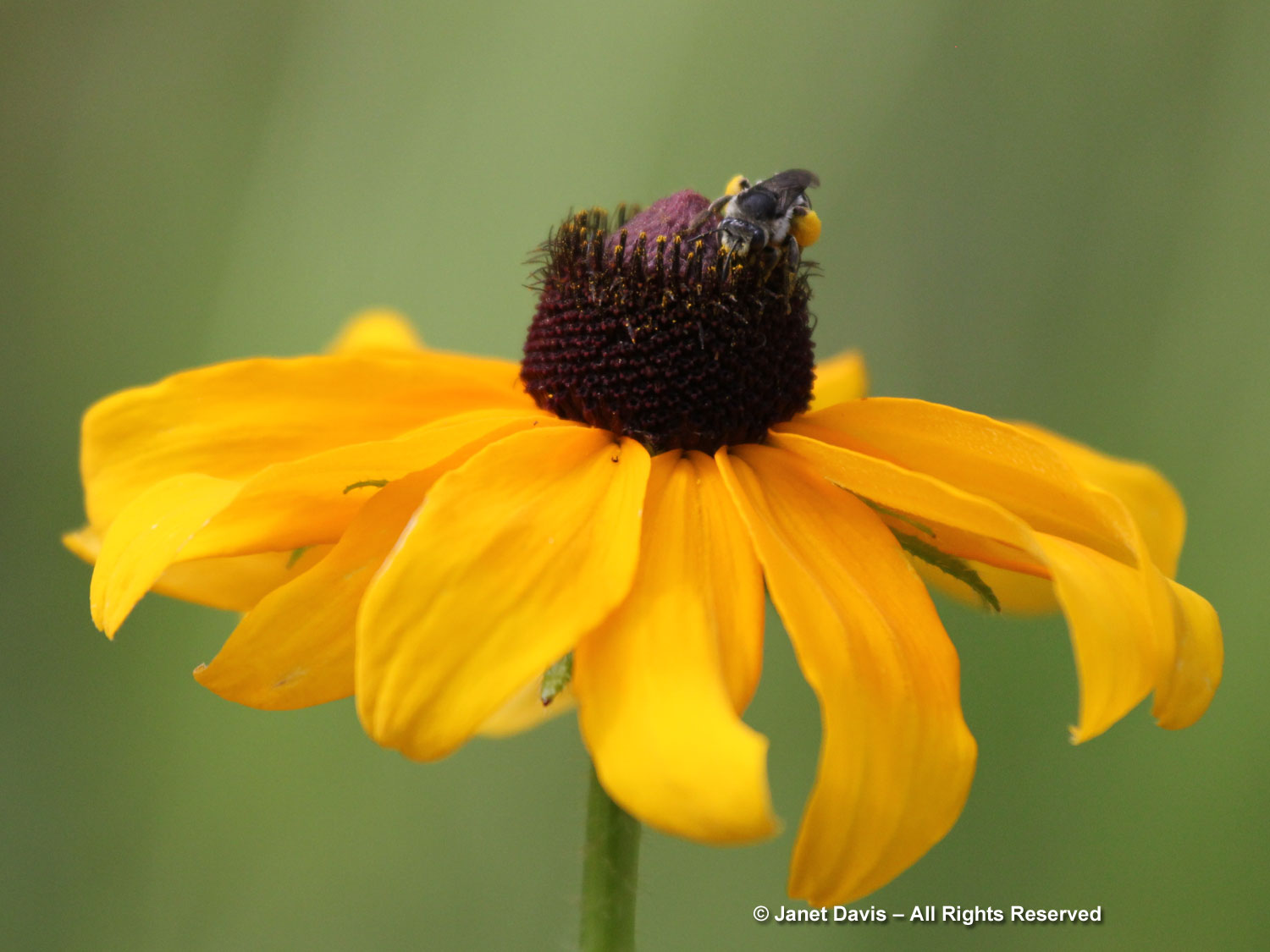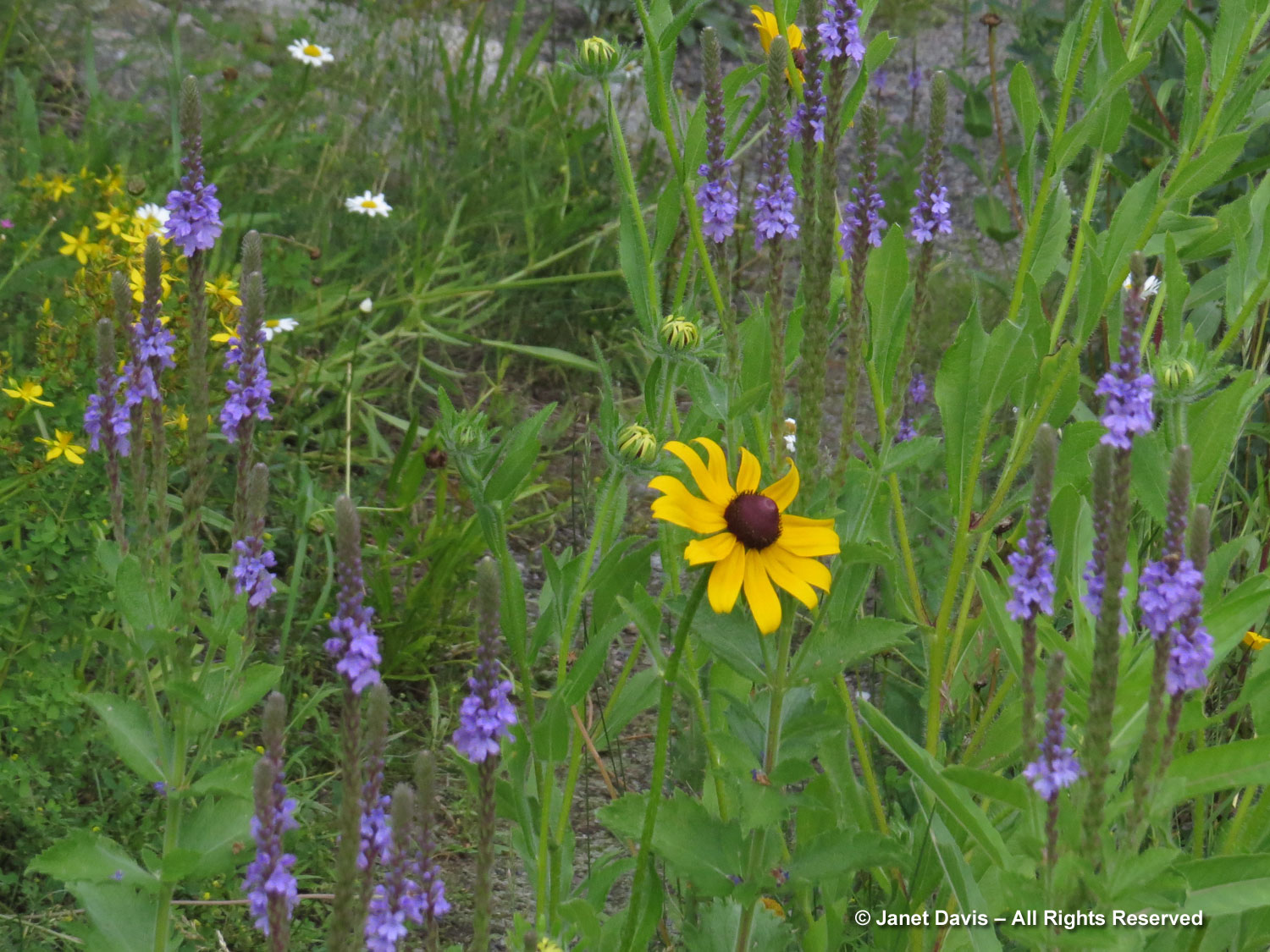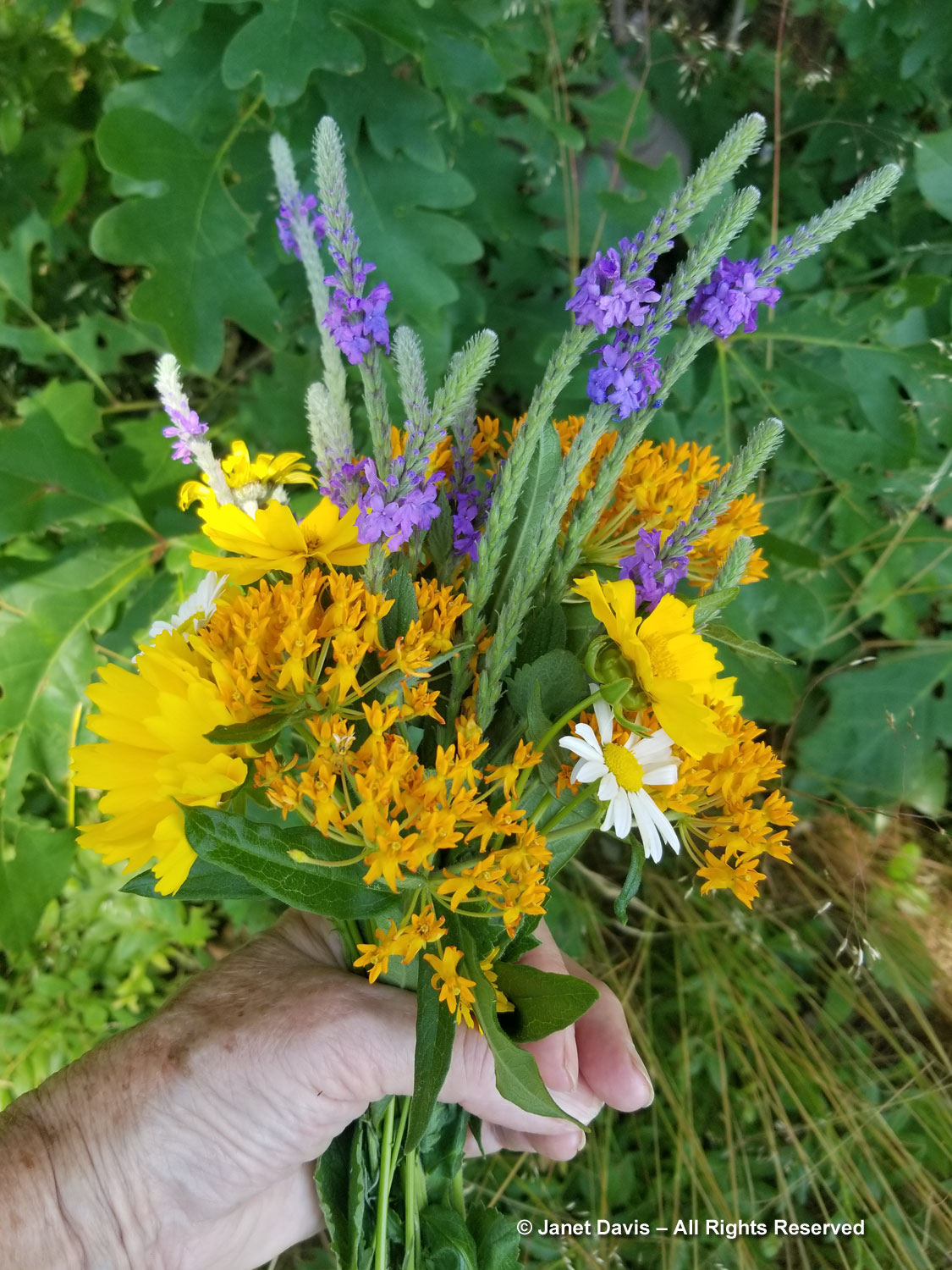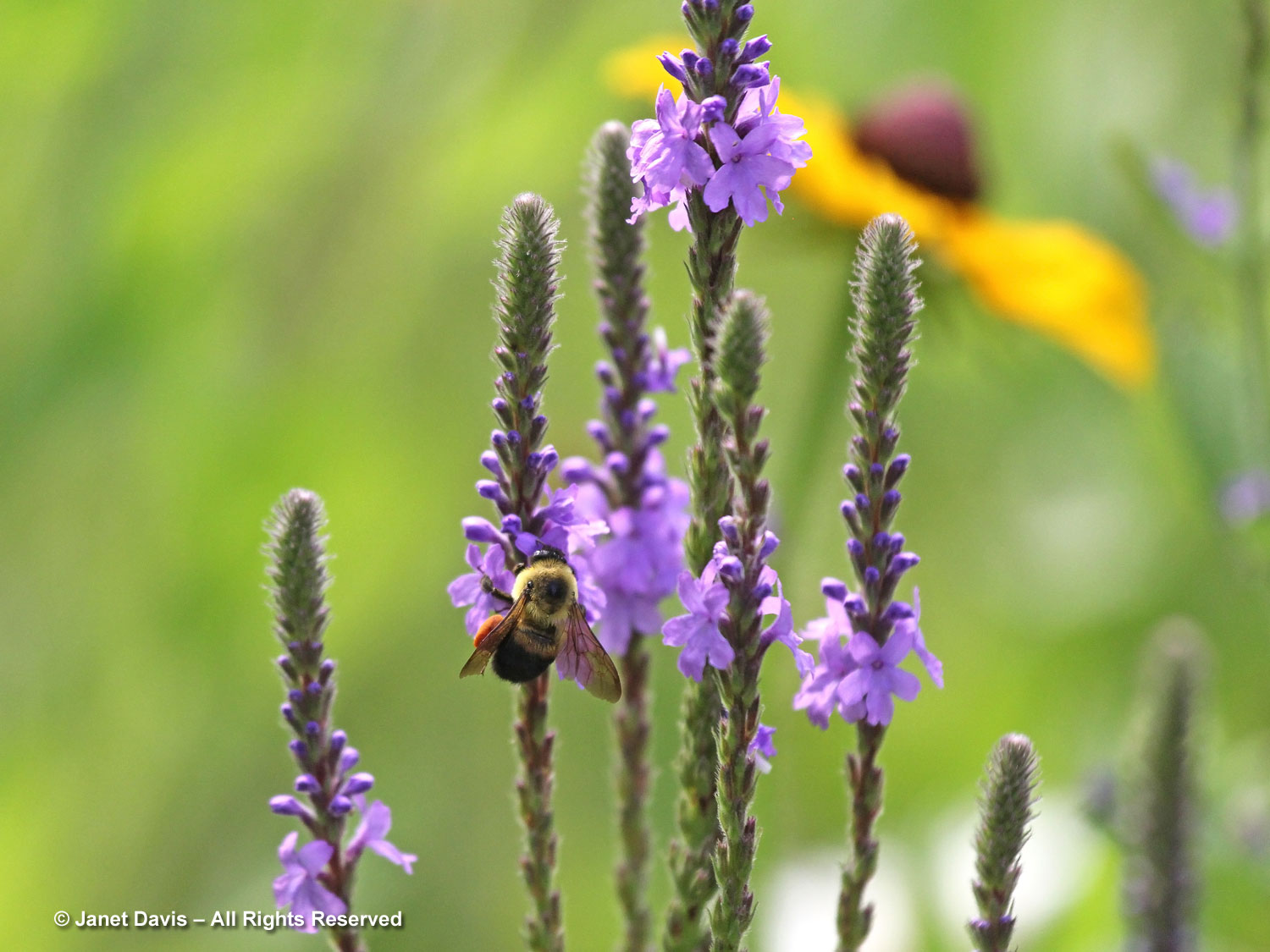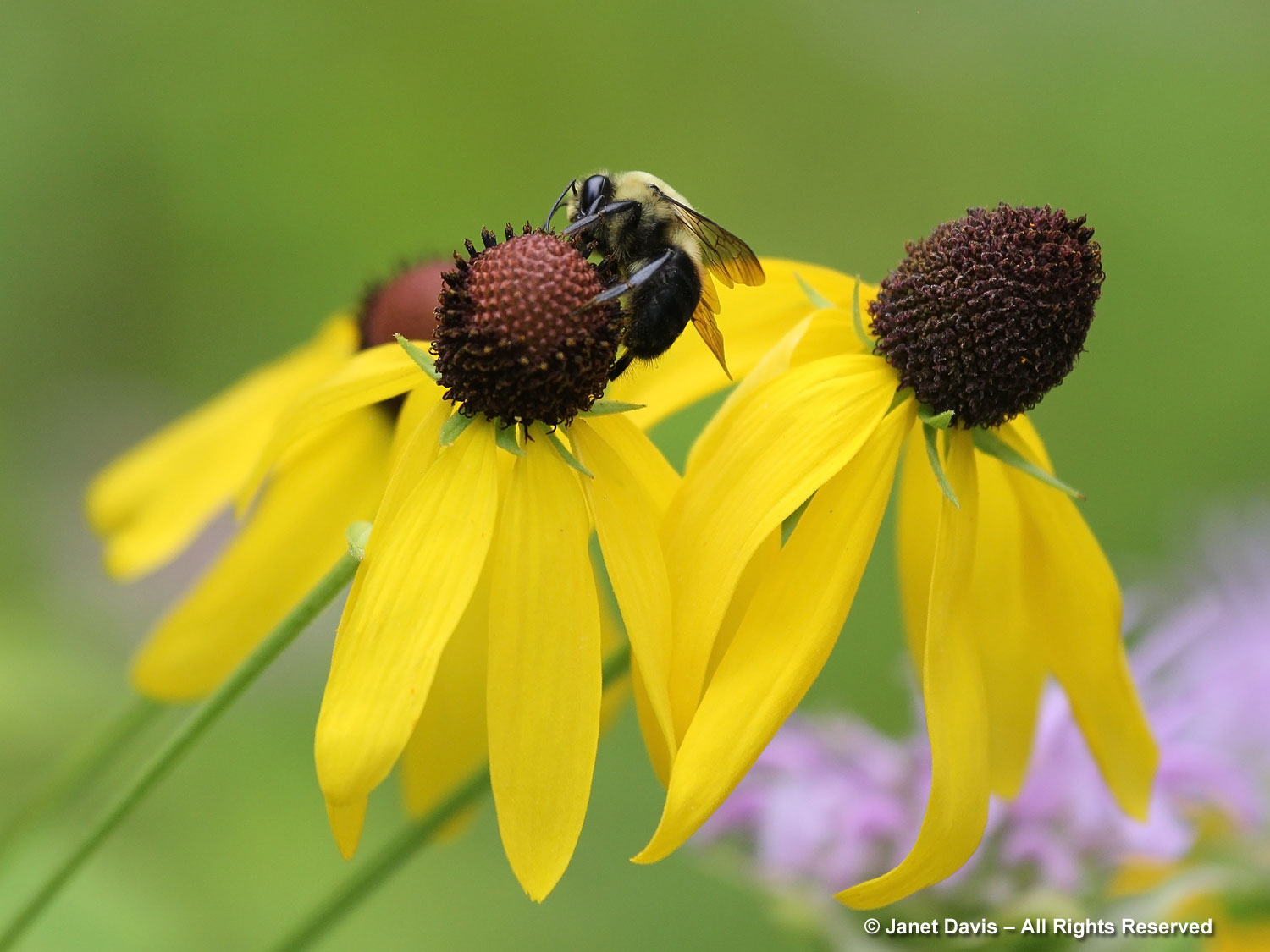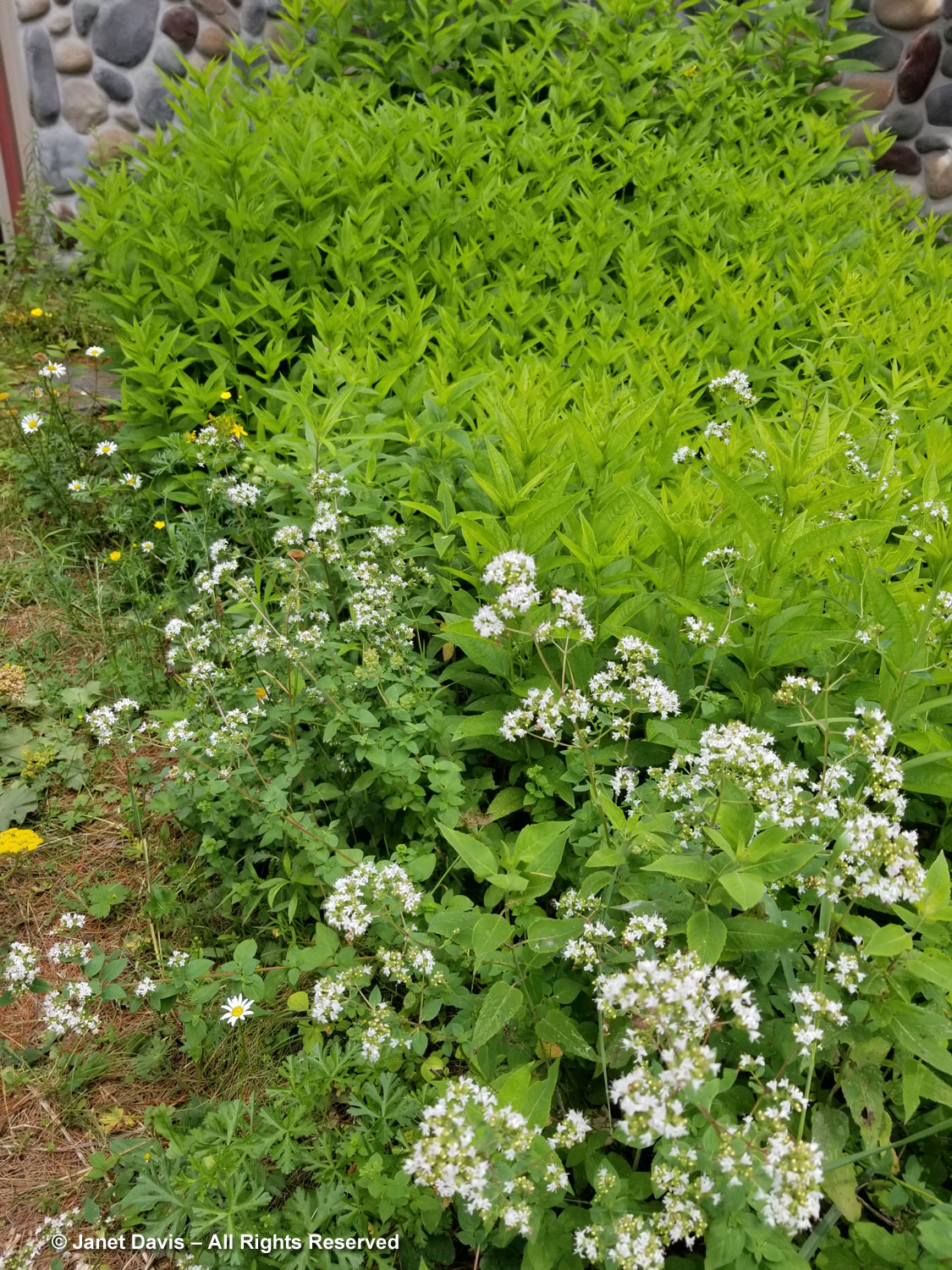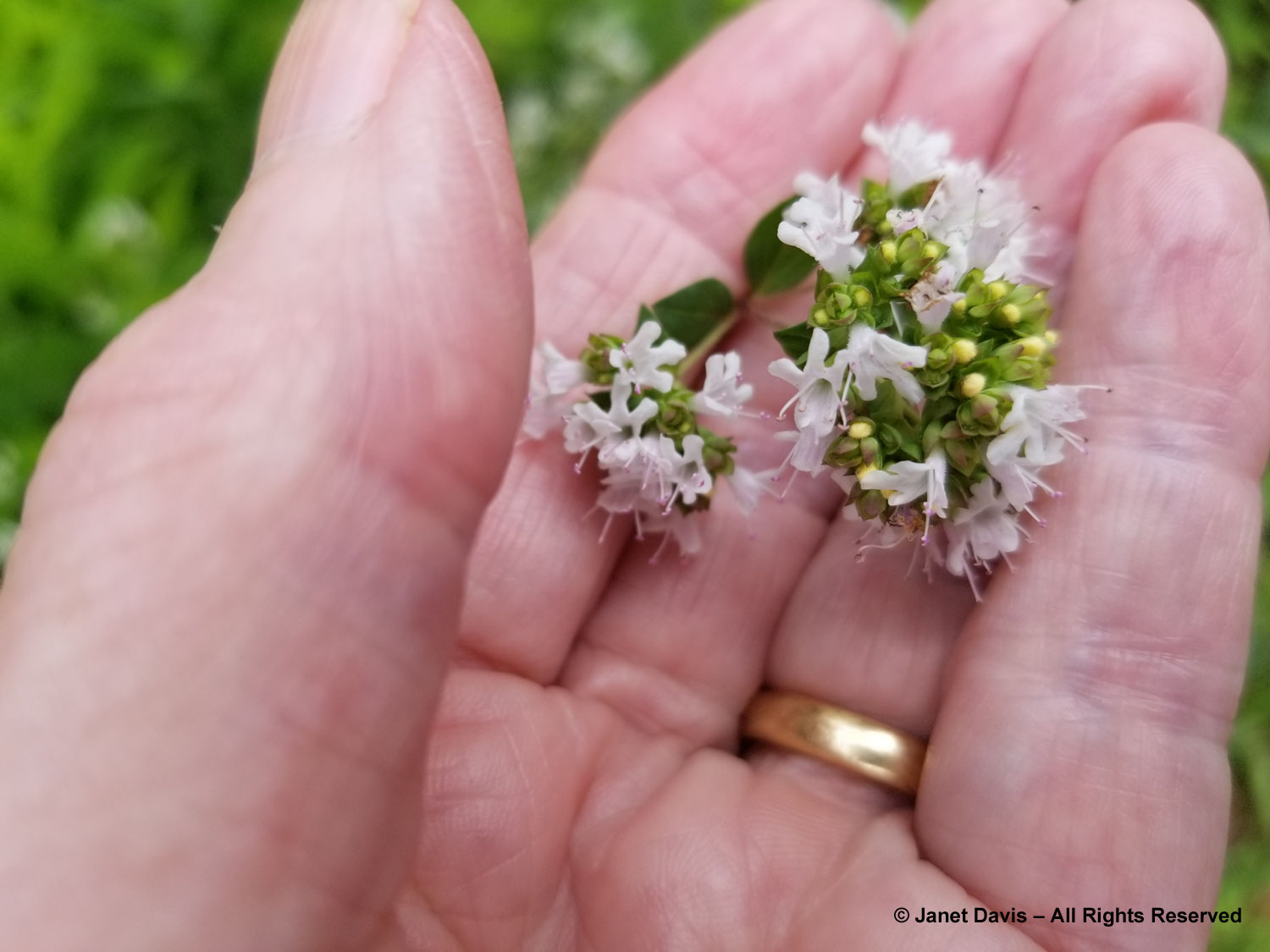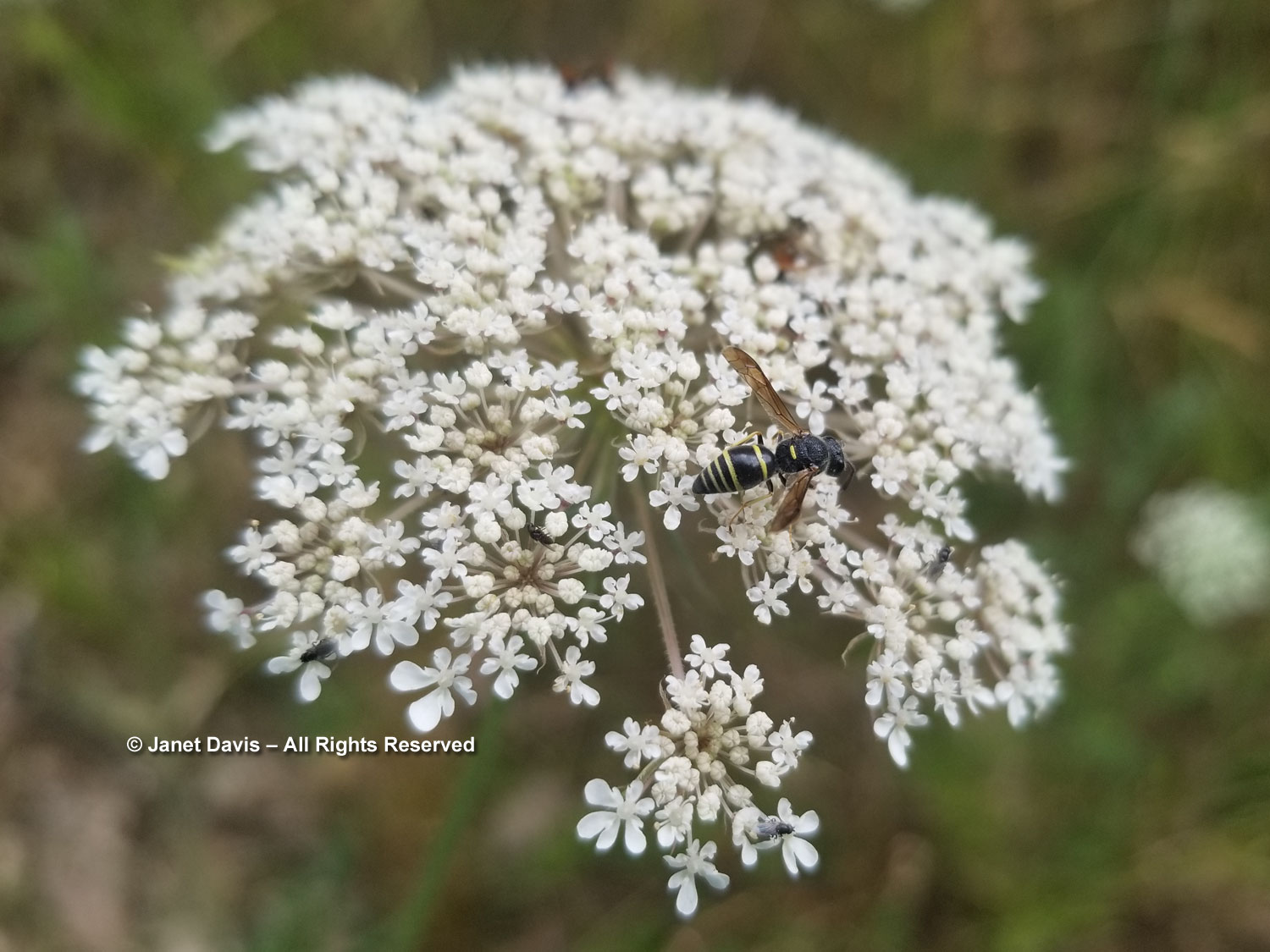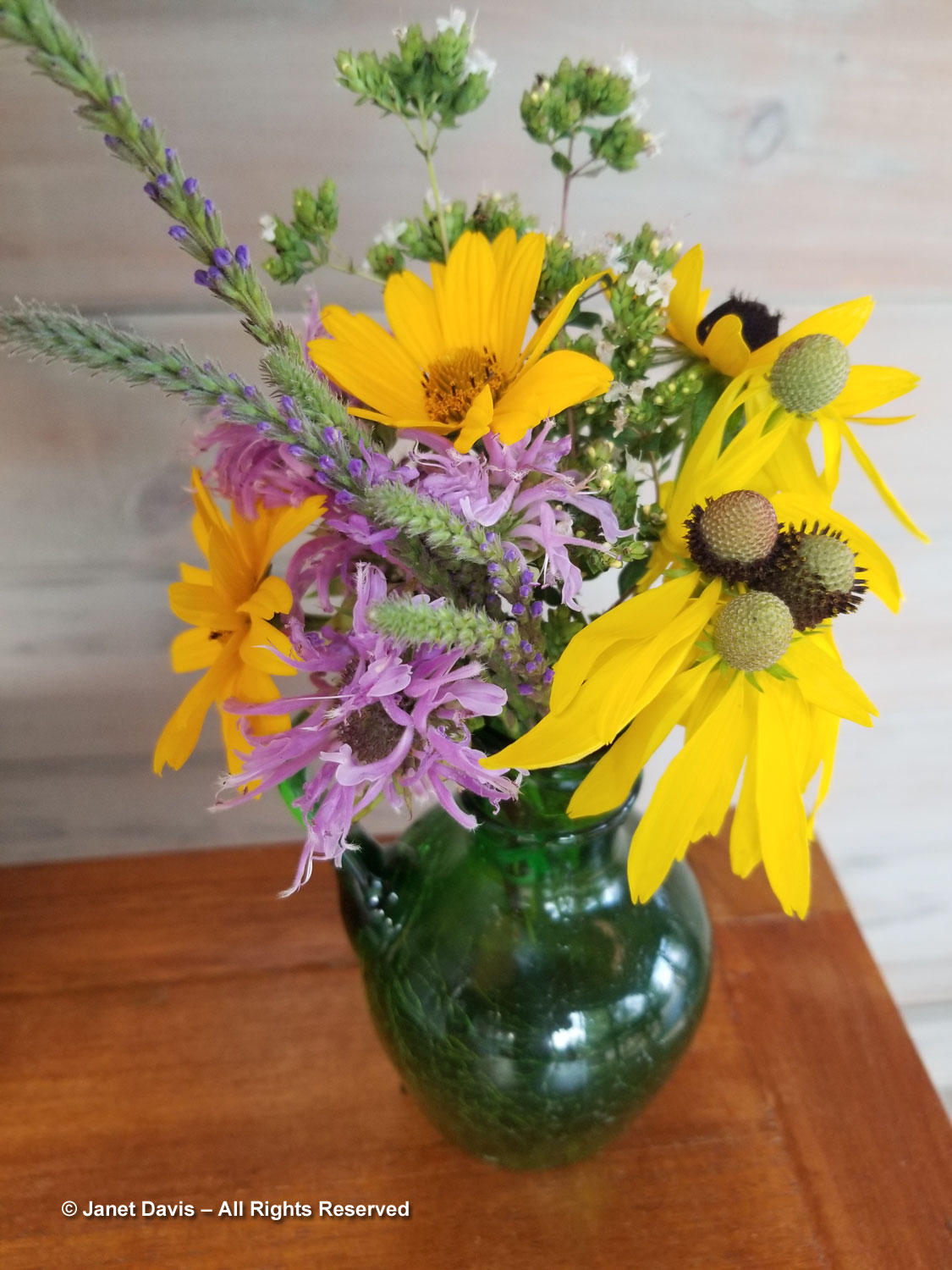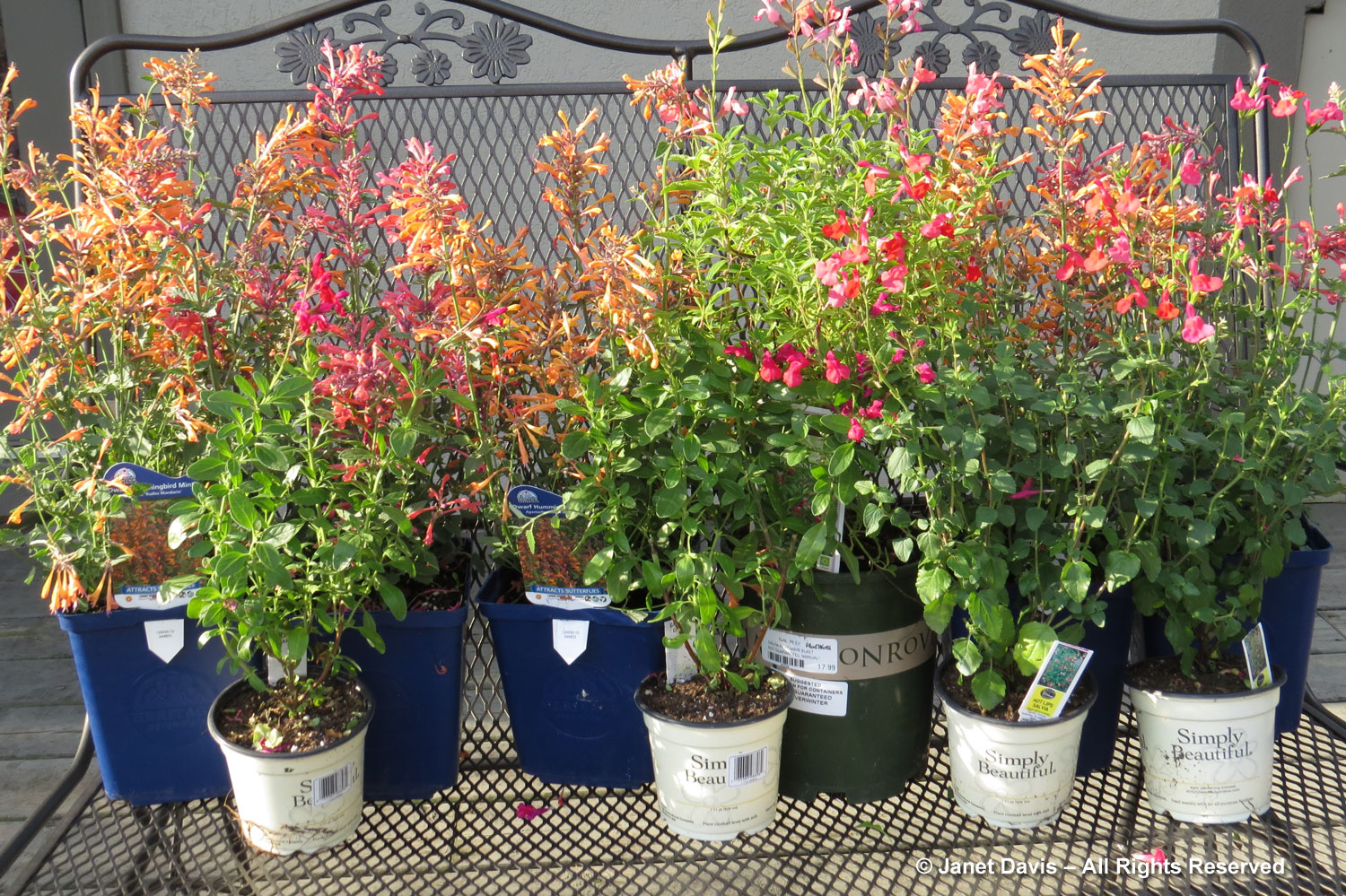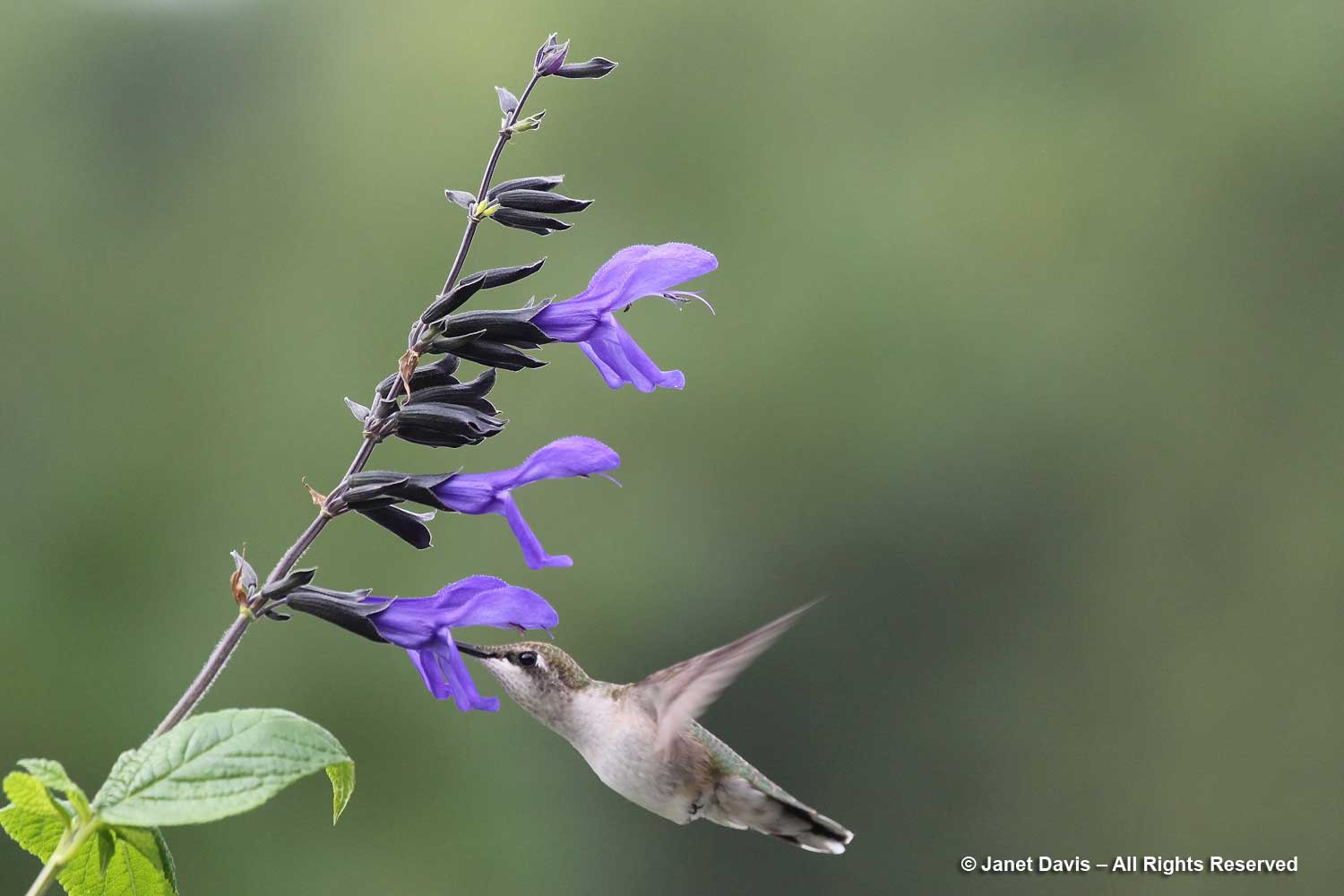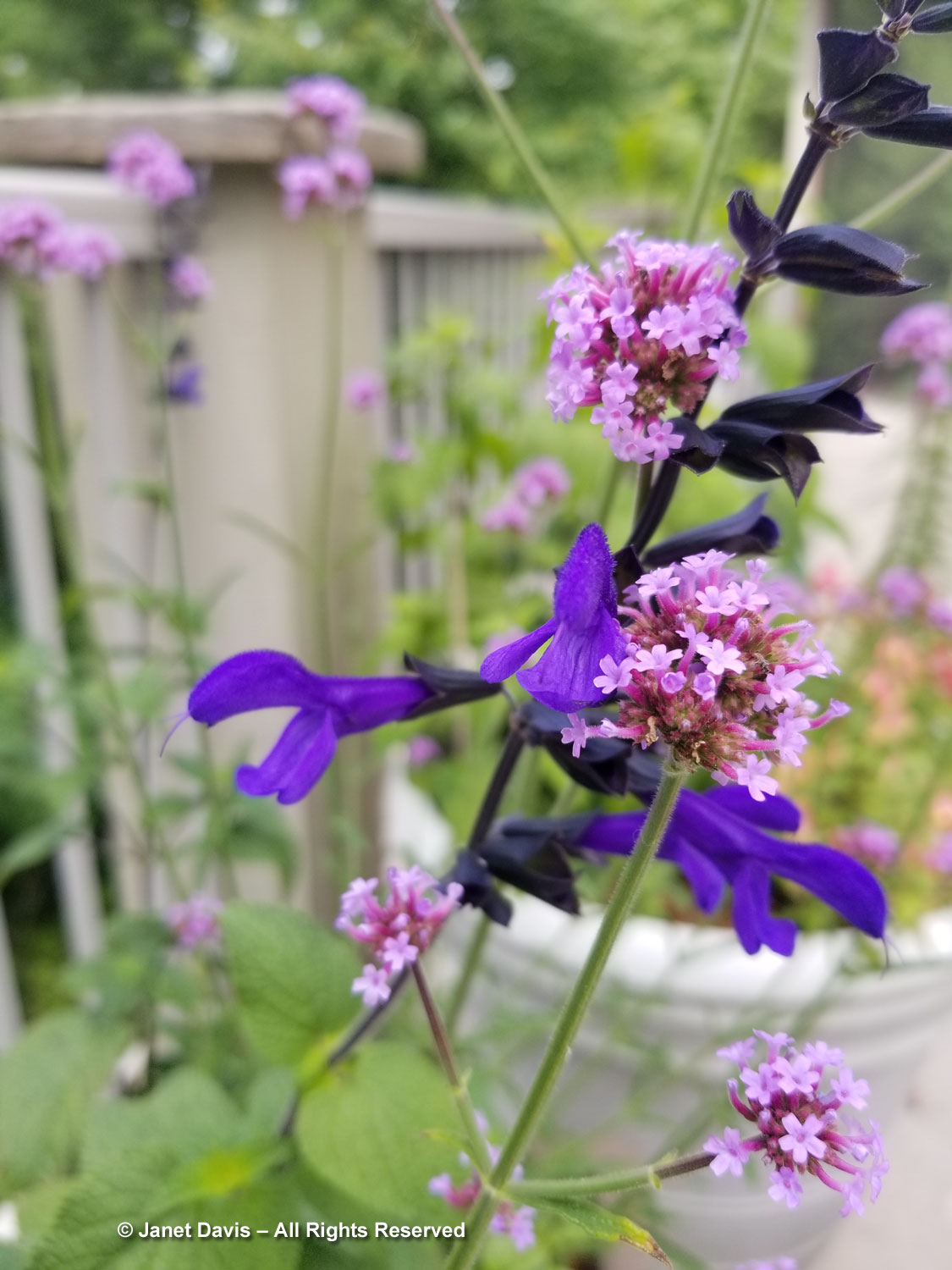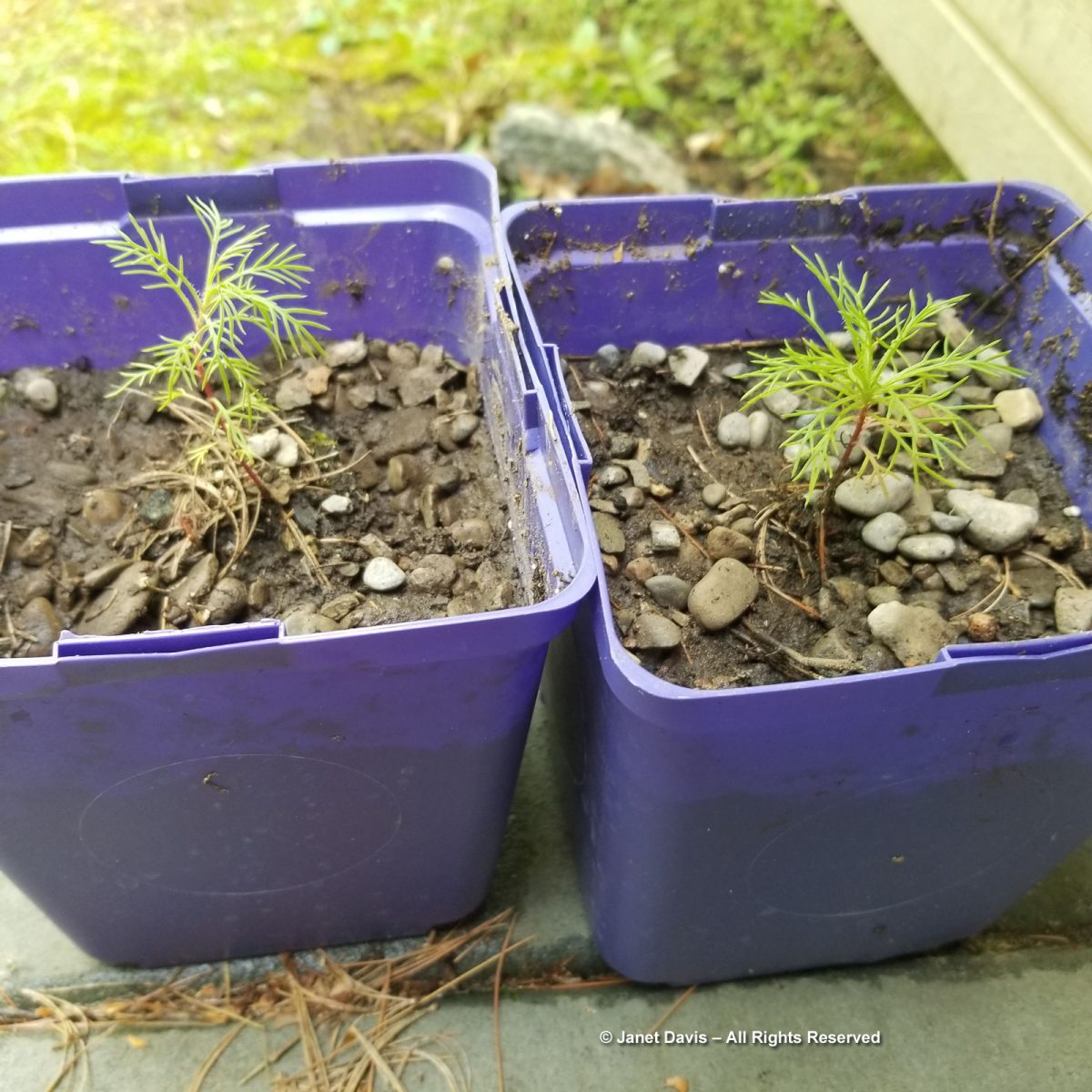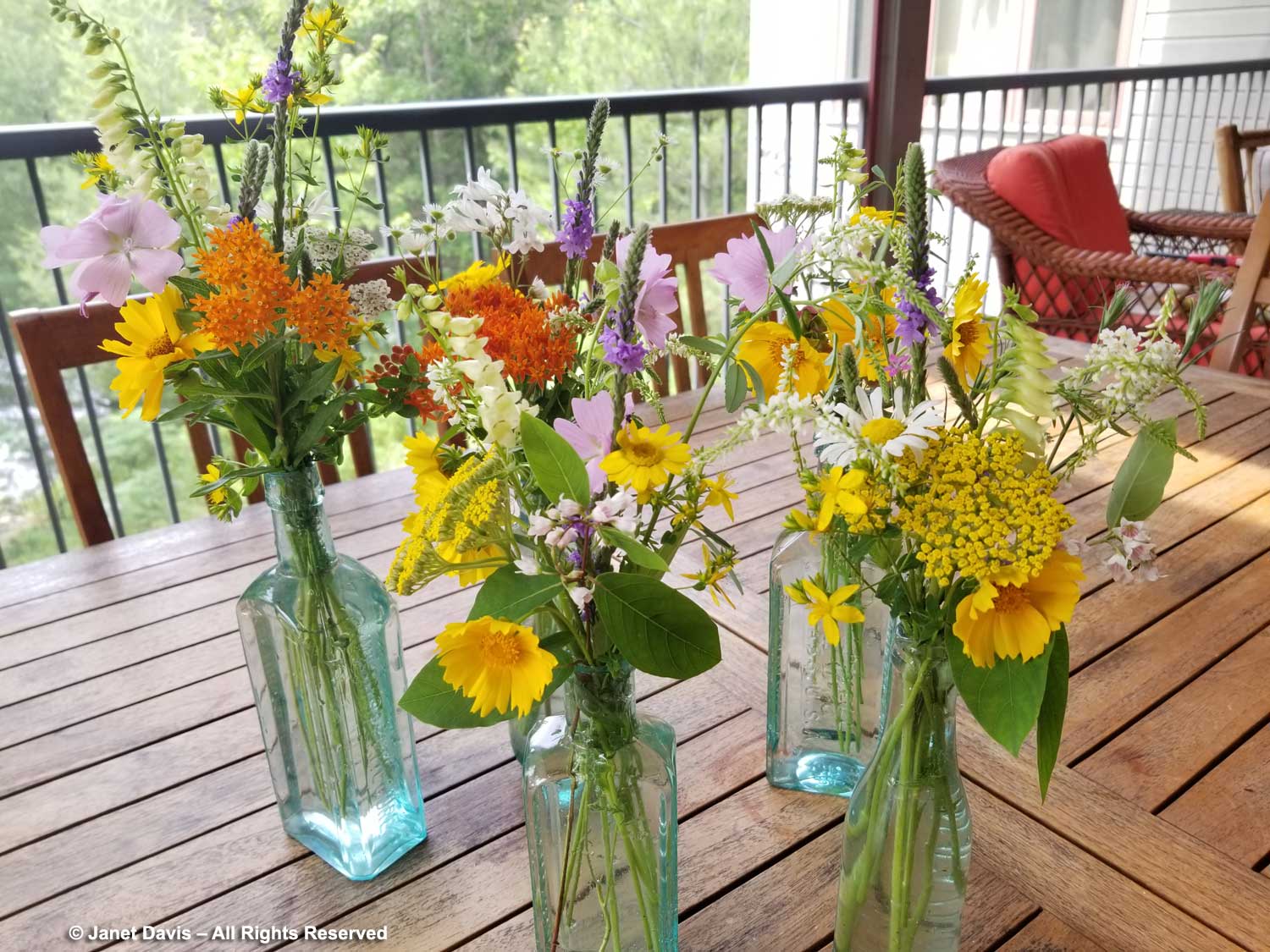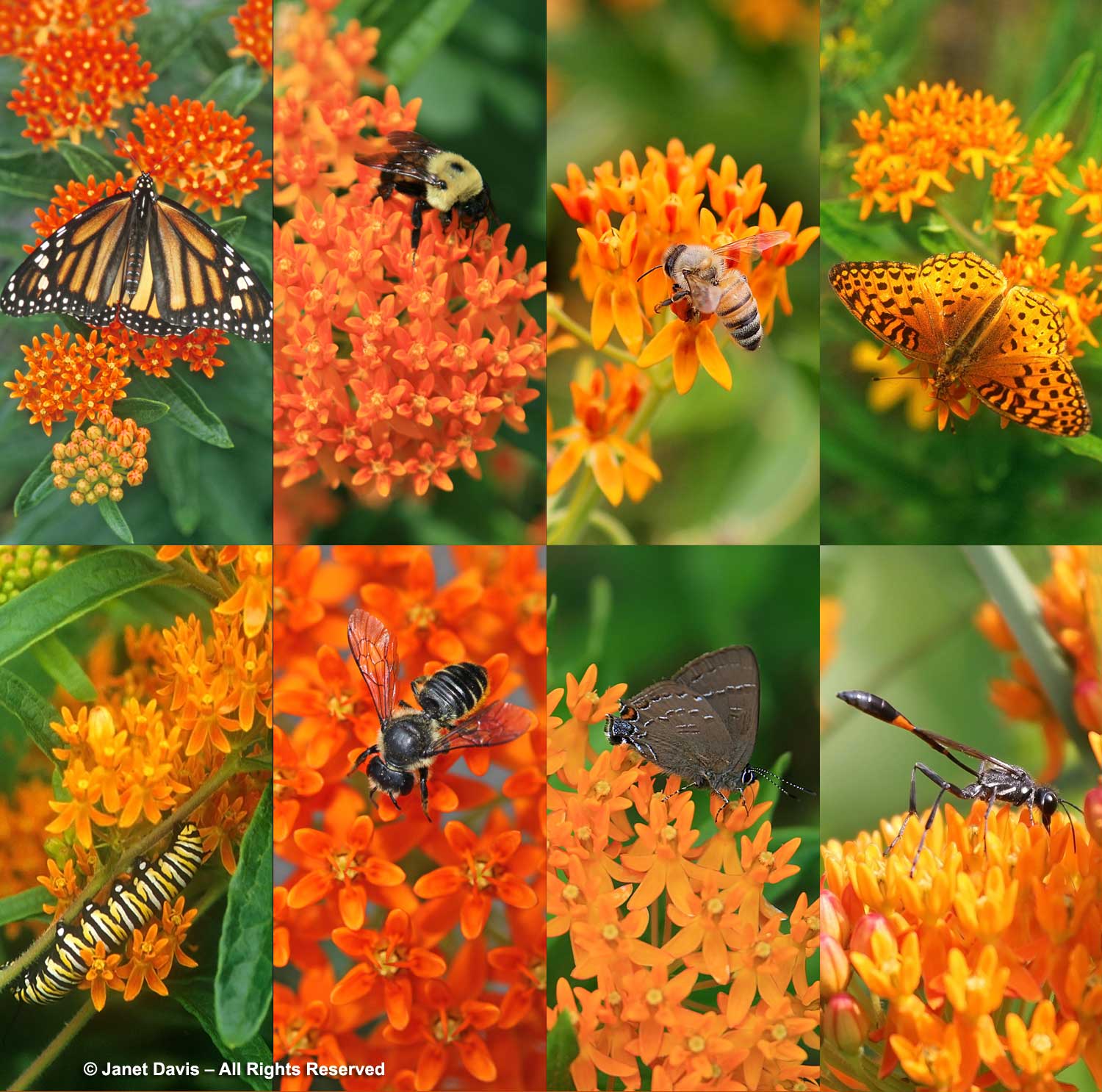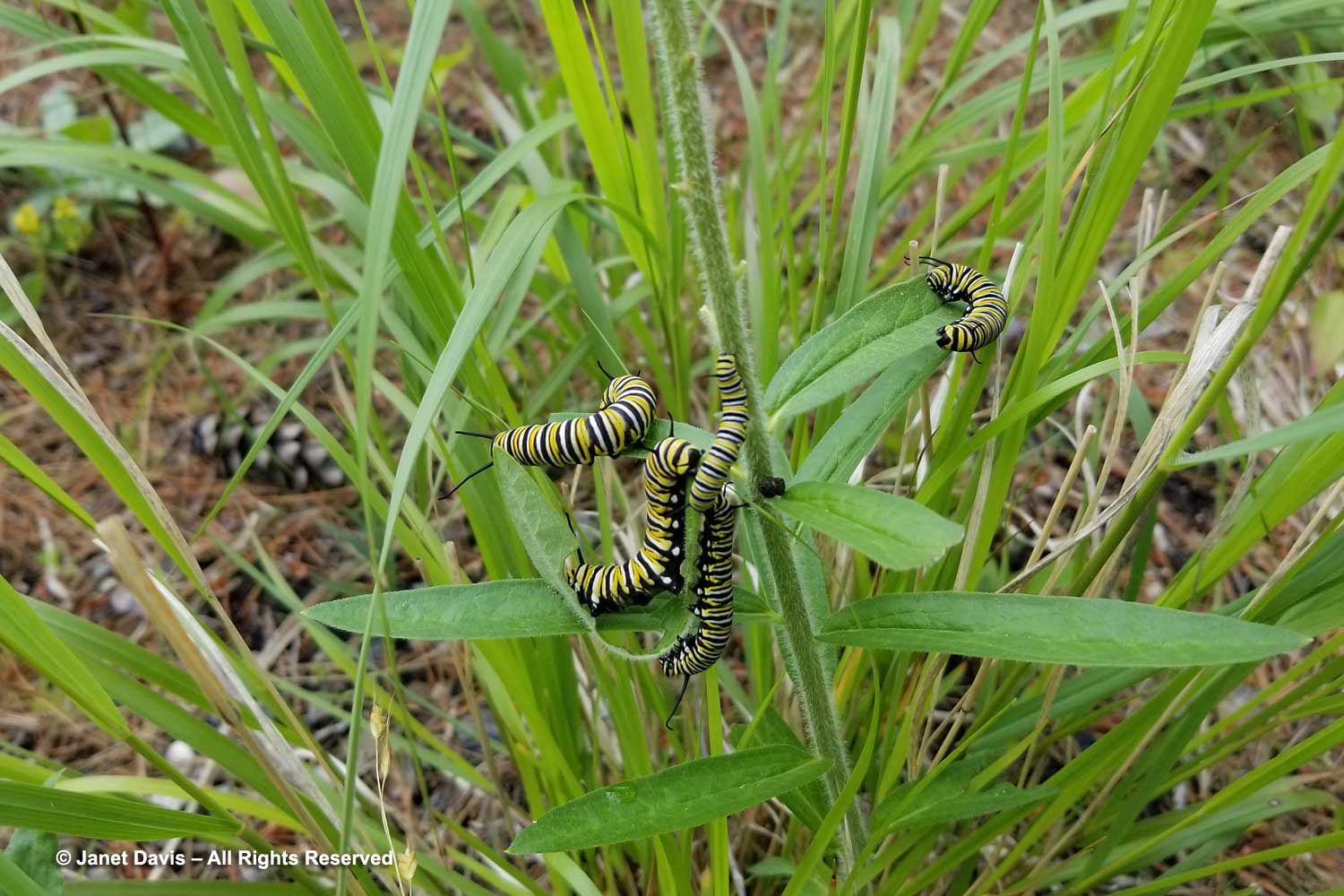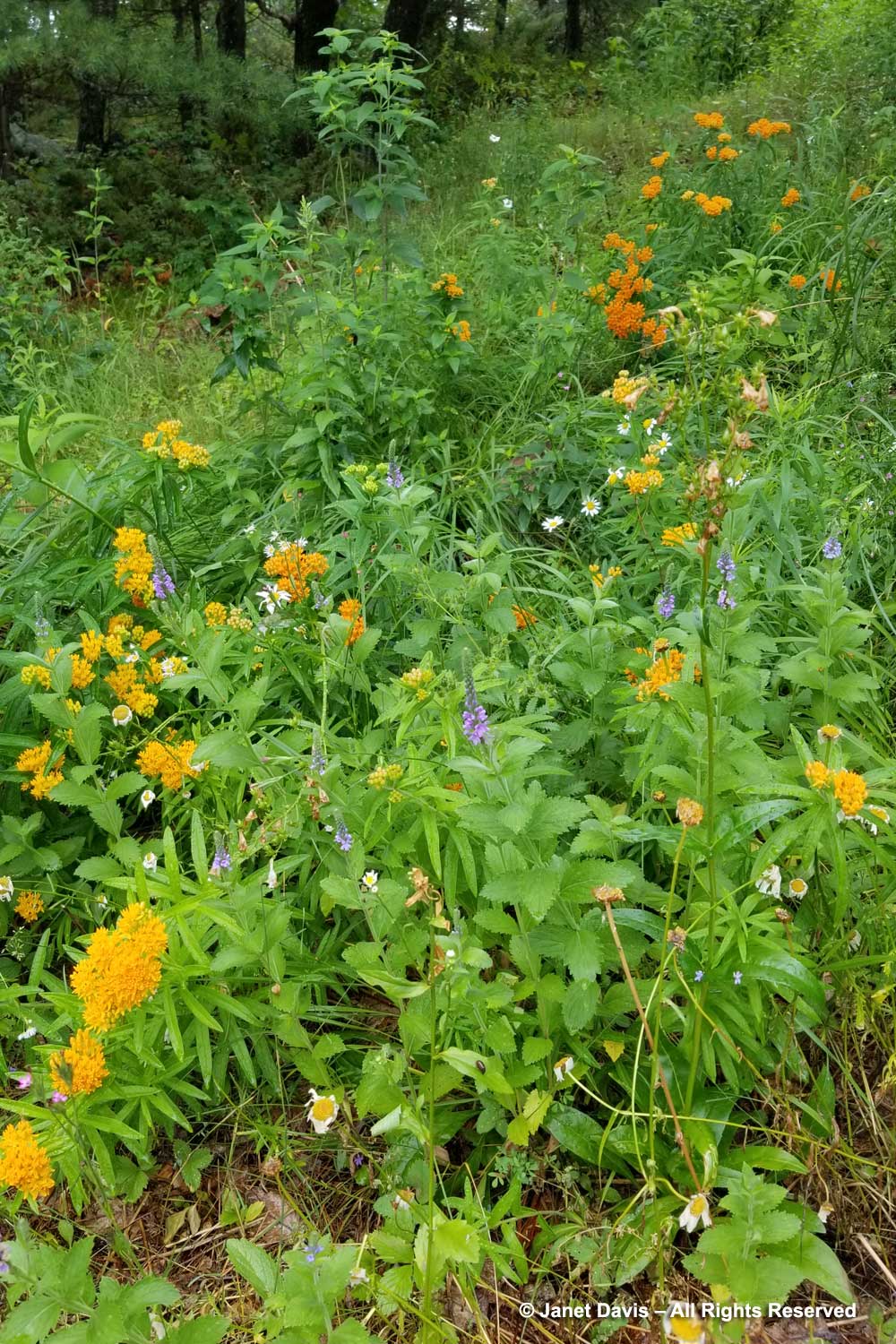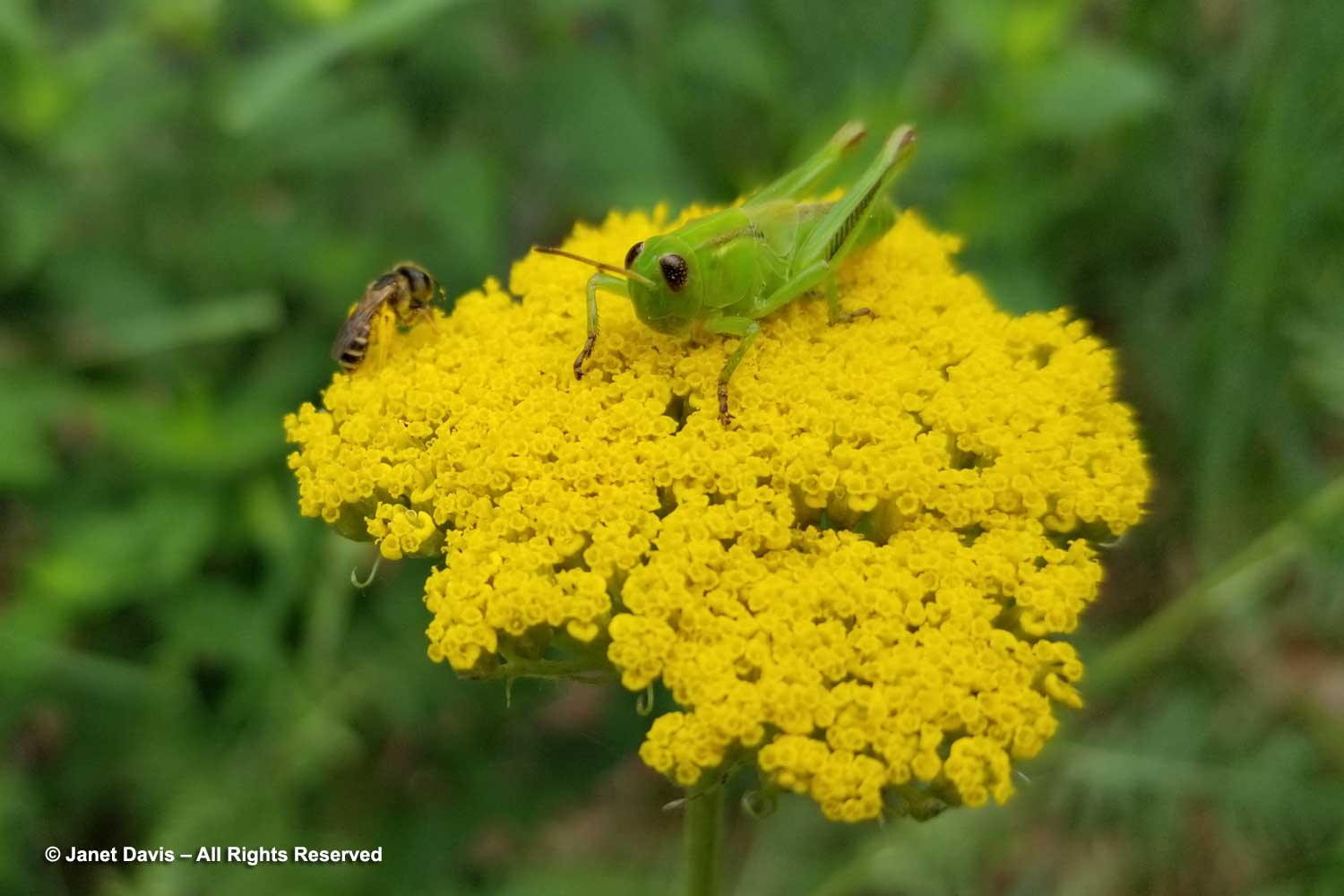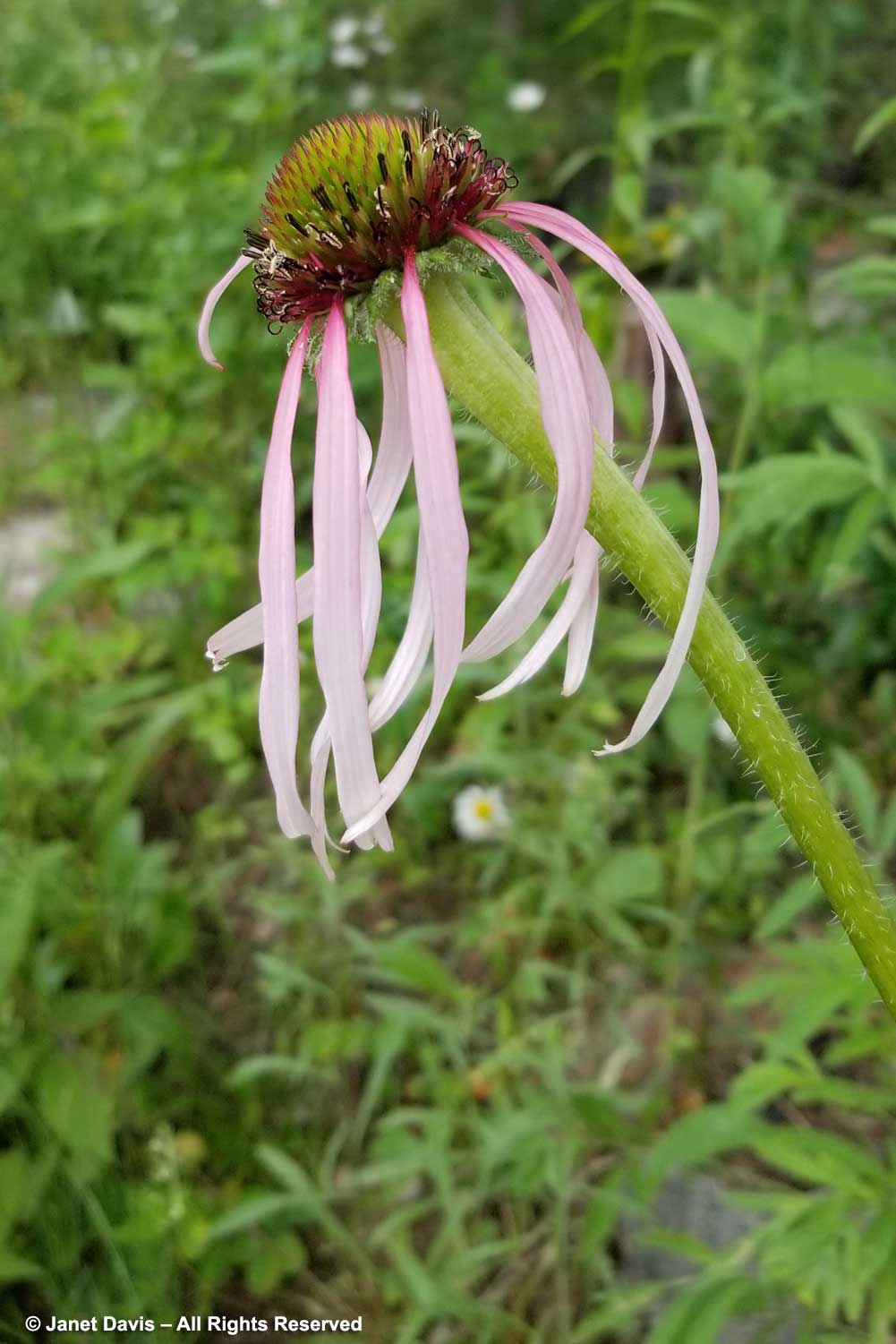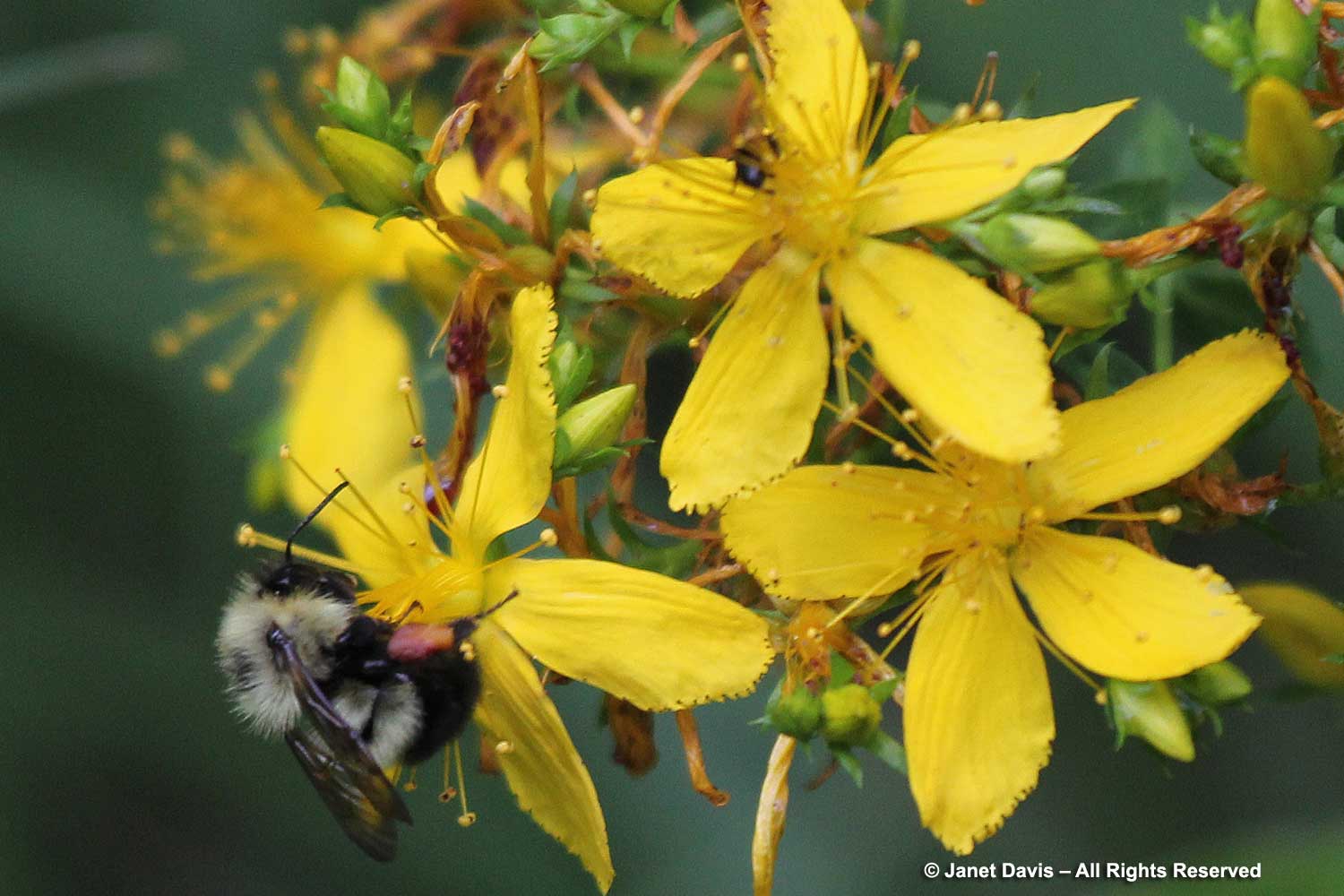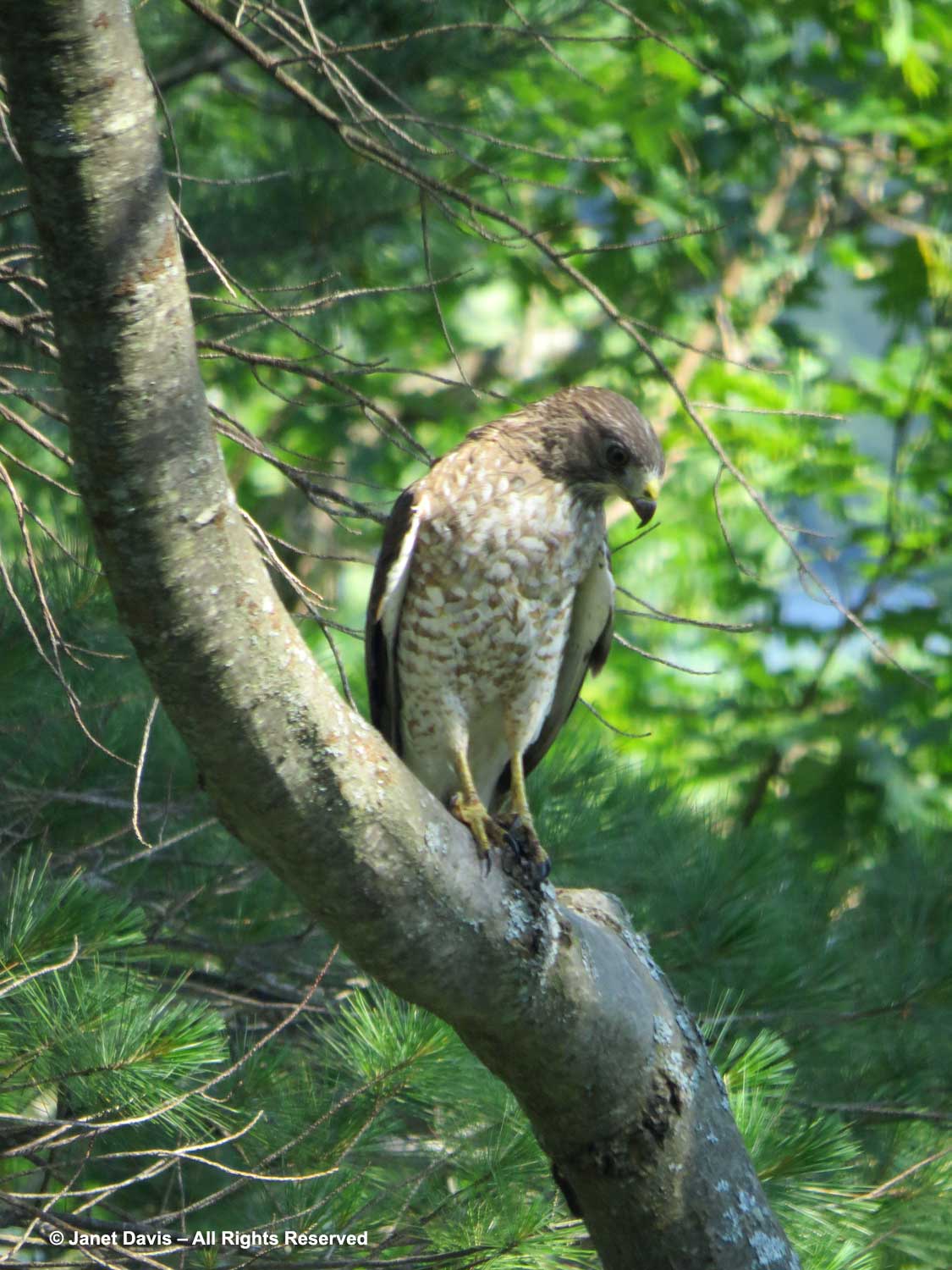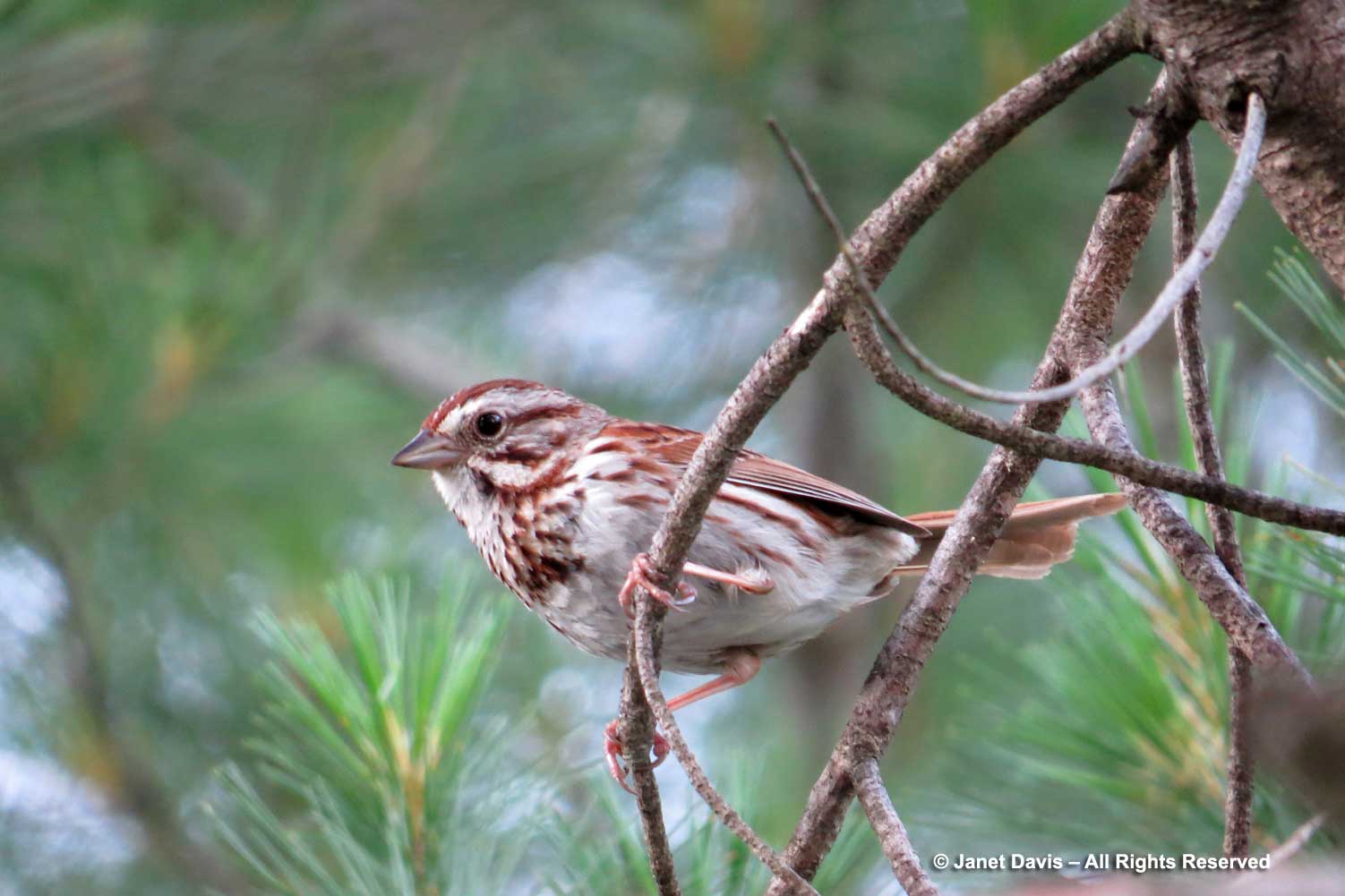My 21st fairy crown for the end of August features a few dependable meadow plants for late summer here on Lake Muskoka. The light-yellow daisy is Helianthus ‘Lemon Queen’, a popular hybrid of two species, H. pauciflorus var. subrhomboideus, stiff sunflower, and H. tuberosus, native Jerusalem artichoke. The dark-centered daisy is sweet blackeyed susan (Rudbeckia subtomentosa). The little white daisies belong to lanceleaf aster (Symphyotrichum lanceolatum), which occurs naturally in my meadows. I’ve also tucked in another naturally-occurring native, stiff goldenrod (Solidago rigida). The cobalt-blue flowers belong to a tender perennial from my deck containers: anise-scented sage (Salvia guaranitica ‘Black & Bloom’), a cultivar from Ball Floral that is itself a cross between two older (unpatented) cultivars ‘Costa Rican Blue’ and ‘Black & Blue’.

Sweet blackeyed susan, aka sweet coneflower, below, is my favourite of the Rudbeckia genus for a few reasons. First, it has the most perfect flowers, below, which are much larger than other Rudbeckia species, and carried at the top of stems on plants that can reach a height of 1.5-2 metres (5-6 ft). Second, though it is native to the American midwest north to Illinois and Michigan, it is perfectly hardy in Muskoka. Third, it flowers at the end of summer when the meadows need more colour. Fourth, it has an interesting scent that is reflected in its third common name, fragrant coneflower.

It isn’t a huge pollinator draw, but I’ve seen the odd wasp or bee foraging on the flowers.

It is classed as a wetland species, preferring moist to mesic soil. While we certainly don’t have a wetland on our property, it is very happy in our partly shaded hillside meadow and at the bottom of our property at the rocky lakeshore where its roots are frequently bathed by the wake from passing boats.

In my west meadow, sweet blackeyed susan blooms simultaneously with Helianthus ‘Lemon Queen’, below. They seem perfectly suited to be sharing this area, along with cup plant (Silphium perfoliatum).
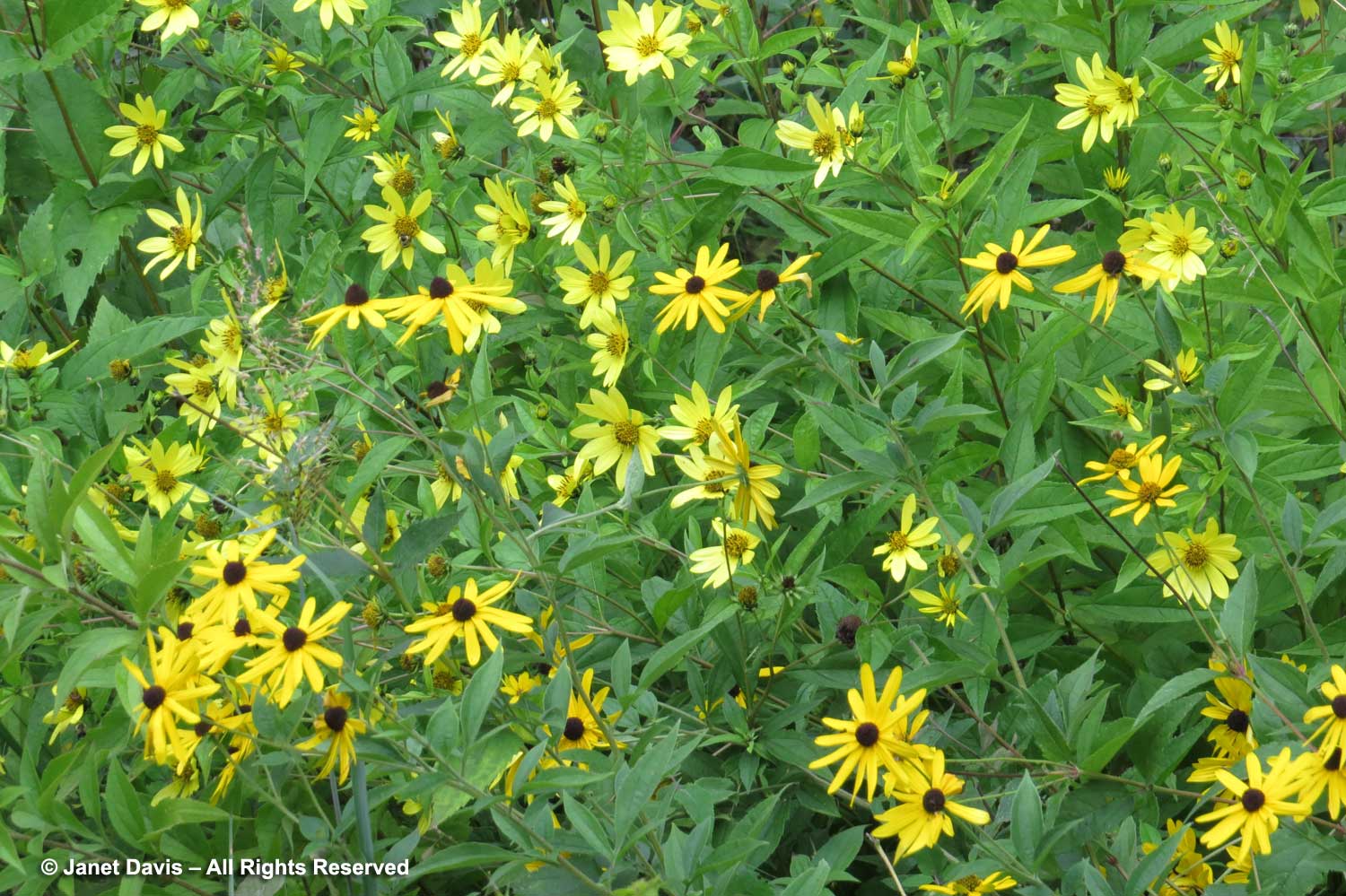
On the other hand, I have a large drift of ‘Lemon Queen’ under my stairs, below, and this planting is visible every time I go into the cottage. That means I get to see it flop its head (all its heads) when the weather is very dry, forcing me to drag the hose over to perk them up again – something I’d never do in the meadow.
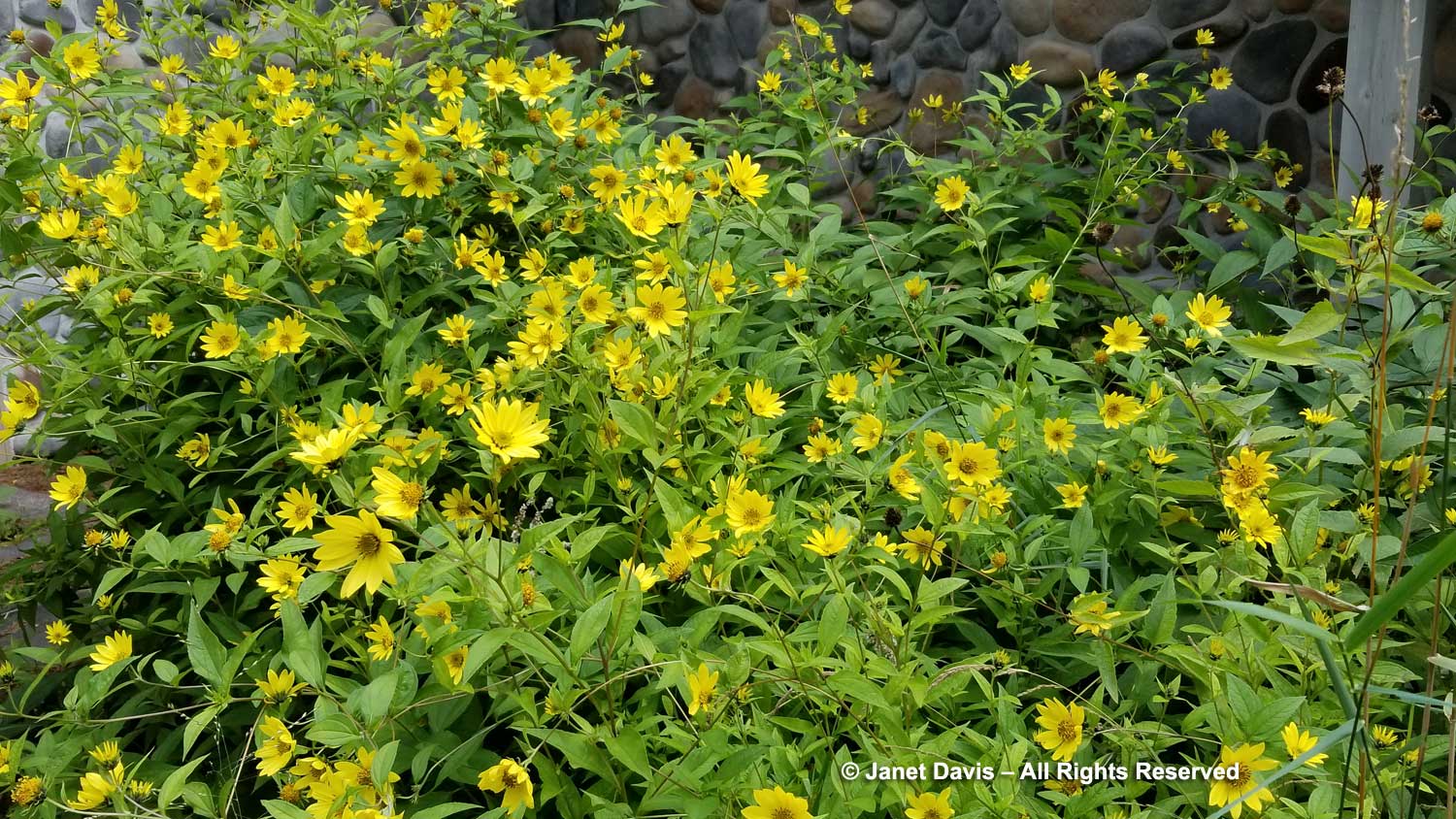
Bumble bees are frequent visitors to Helianthus ‘Lemon Queen’.
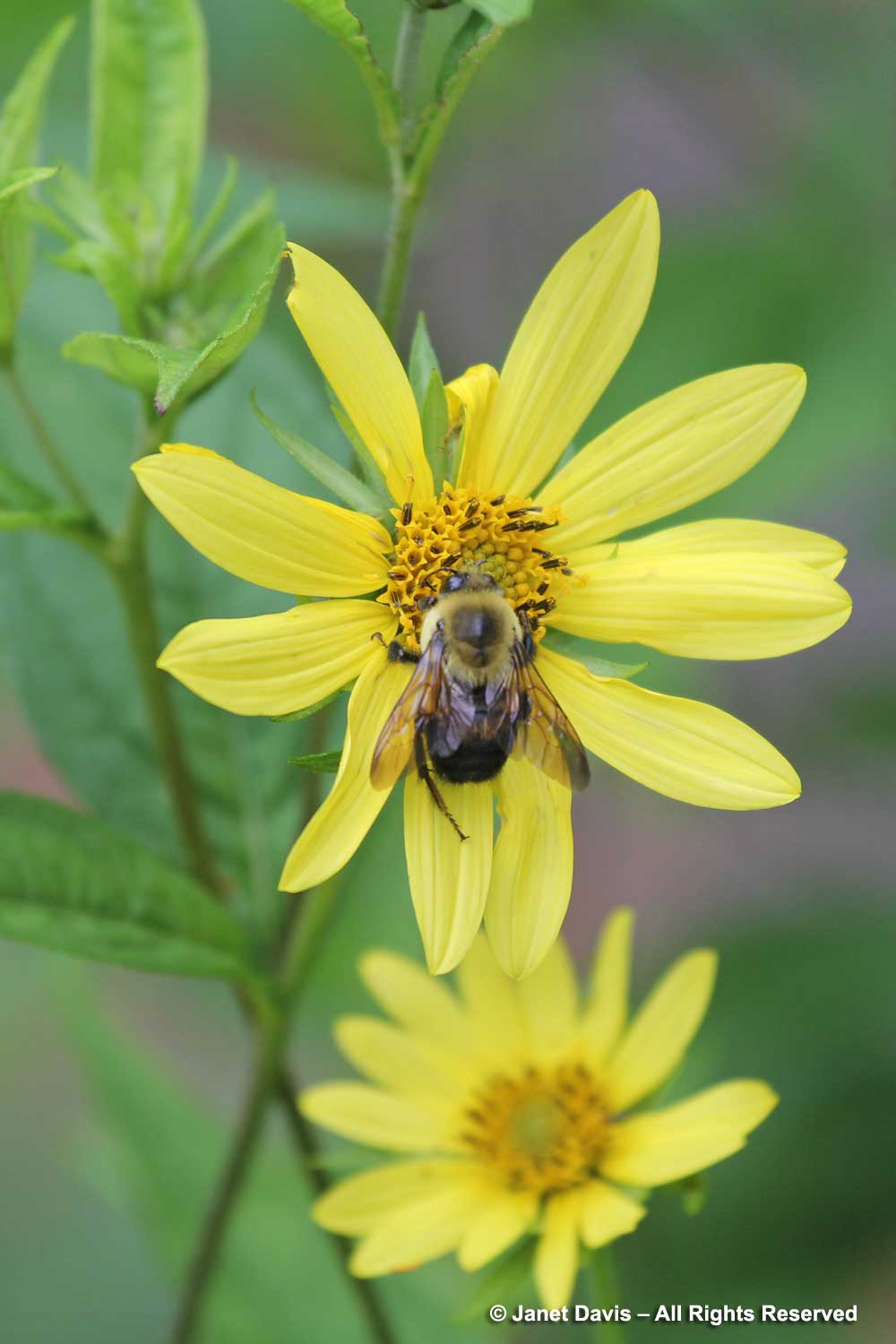
This is also the time of summer for native lance-leaf aster (Symphyotrichum lanceolatum) with its panicles of tiny white flowers. It is reportedly allelopathic (i.e. secretes a substance that hurts plants growing near it), but unless I’ve misidentified it, it doesn’t seem to have impeded the growth of its meadow-mates, below.

Bees enjoy foraging on it, including my rare meadow guest below, the yellow-banded bumble bee (Bombus terricola).

Stiff goldenrod, another member of the big goldenrod clan is in bloom now, though DNA analysis has assigned it to a different genus. These changes take a while to percolate through the literature and commerce, so many sources still list it as Solidago rigida, rather than Oligoneuron rigida. But it is an exceptional goldenrod, gradually forming clumps….
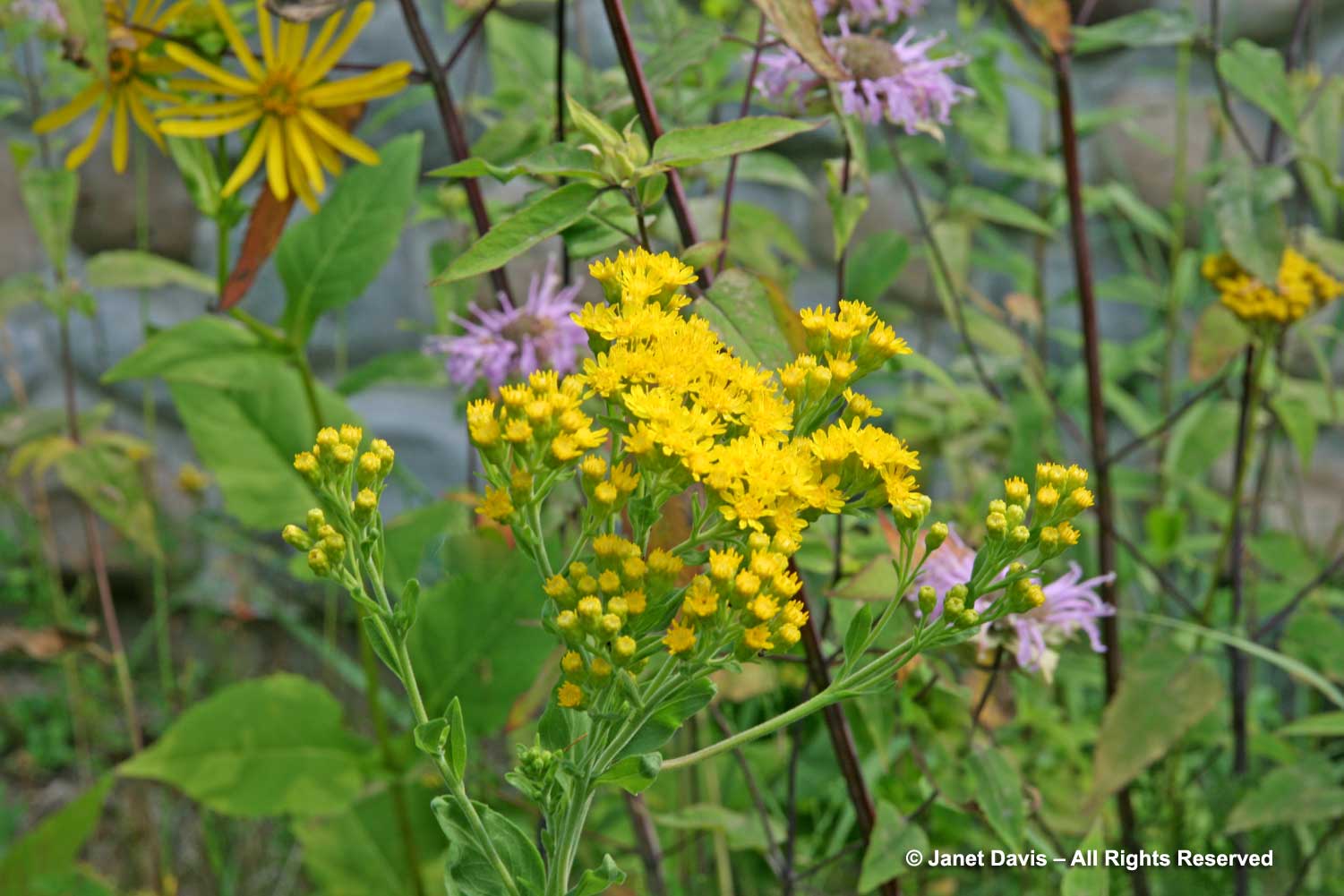
…. with strong stems topped by rounded clusters of tiny flowers. Like all “goldenrods”, it is a bee favourite, like this orange-belted bumble bee (Bombus ternarius).

Though my fairy crowns thus far have featured plants growing in my Toronto garden or in my meadows on Lake Muskoka, the 21st edition contains a few spikes of a tender South American perennial that I take great care to overwinter indoors under a window in my basement laundry tubs in the city so I can have it in my cottage deck containers each summer. These are my “motley pots”, below, and the plant I’m referring to is the anise-scented sage with the blue spikes, Salvia guaranitica ‘Black and Bloom’, which is difficult to find in spring in Toronto garden centres. I made this photo in the summer of 2019, but each year has a different cast of characters in my “Hummingbird Photo Studio”. (If you click on the preceding link, you’ll see the popularity of this year’s experimental hummingbird favourite: standing cypress, Ipomopsis rubra.)

Their all-time favourite, however, is Salvia guaranitica ‘Black and Bloom’, below….
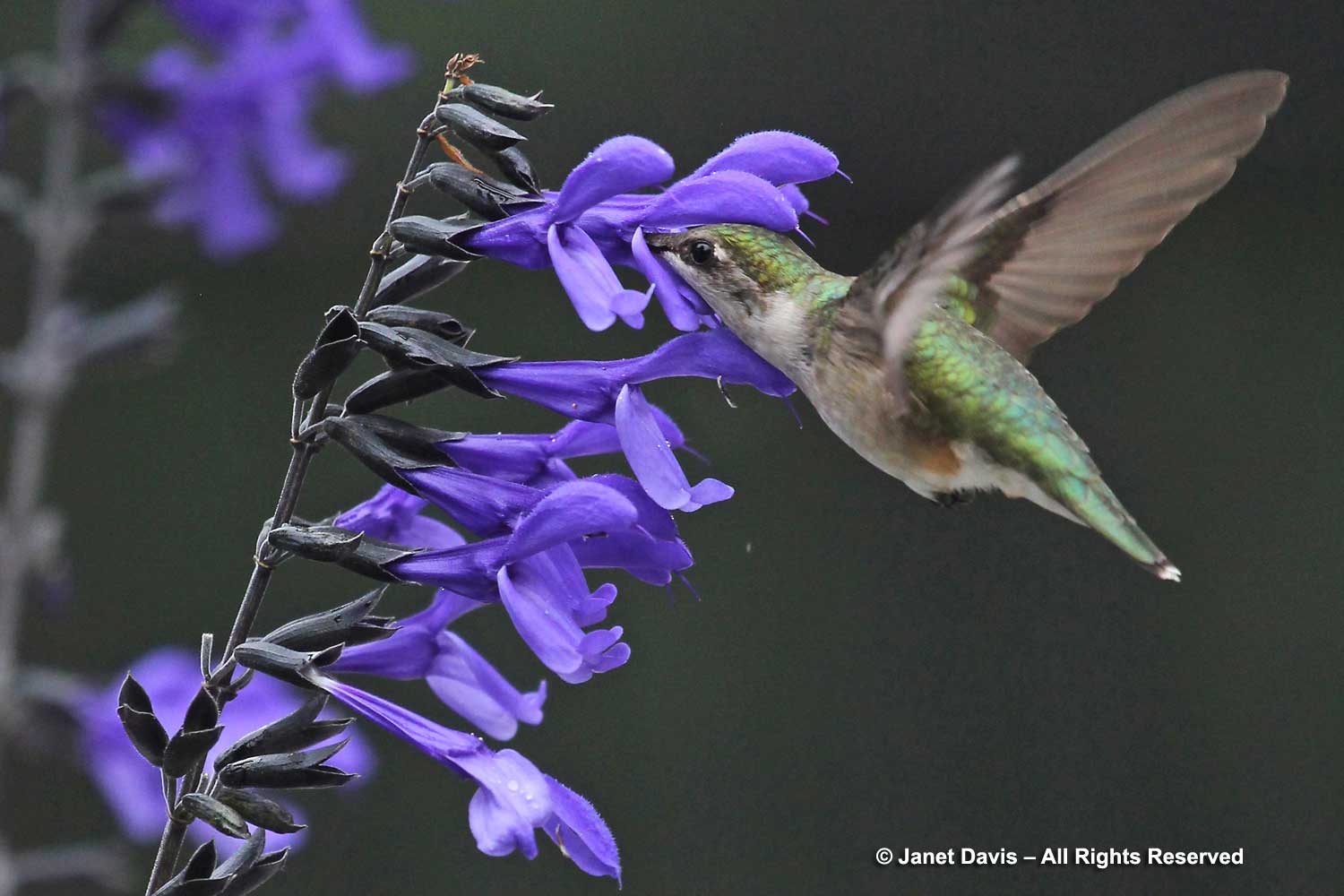
I have grown lots of hybrid salvias including ‘Amistad’, ‘Wendy’s Wish’ and ‘Amber Wish’, and they all attract hummingbirds.

Here’s a little video I made of the ruby-throated hummingbird on various plants in my containers through the years:
When I made this fairy crown, I had 2 out of 3 of my sons in attendance, as well as my husband, below, and they were all good sports in this serendipitous project.

They didn’t get the full-on fairy crown treatment like the grandkids, but I made them all wear meadow flowers, including my eldest son, right, and his partner….

…..and my middle son, below. Youngest son is off in Italy being married in less than 2 weeks! I plan to walk him down the aisle, but my fairy crowns have been instructed to keep up the show until winter!

********
Meet my 20 previous fairy crowns!
#1 – Spring Awakening
#2 – Little Blossoms for Easter
#3 – The Perfume of Hyacinths
#4 – Spring Bulb Extravaganza
#5 – A Crabapple Requiem
#6 – Shady Lady
#7 – Columbines & Wild Strawberries on Lake Muskoka
#8 – Lilac, Dogwood & Alliums
#9 – Borrowed Scenery & an Azalea for Mom
#10 – June Blues on Lake Muskoka
#11 – Sage & Catmint for the Bees
#12 – Penstemons & Coreopsis in Muskoka
#13 – Ditch Lilies & Serviceberries
#14 – Golden Yarrow & Orange Milkweed
#15 – Echinacea & Clematis
#16 – A Czech-German-All American Blackeyed Susan
#17- Beebalm & Yellow Daisies at the Lake
#18- Russian Sage & Blazing Stars
#19-My Fruitful Life
#20-Cup Plant, Joe Pye & Ironweed

